Painted pots offer an incredible opportunity to transform simple terracotta containers into stunning decorative pieces that reflect your personal style. With countless techniques ranging from elegant ombre effects to vibrant galaxy designs, painted pot projects allow both beginners and experienced crafters to create unique home accents. Whether you're looking to brighten your garden, enhance indoor plant displays, or craft thoughtful handmade gifts, these artistic approaches combine creativity with functionality. From geometric patterns to vintage-inspired designs, each painted pot technique brings its own character and charm to your living spaces.
1. Ombre Painted Pot Gradient Magic
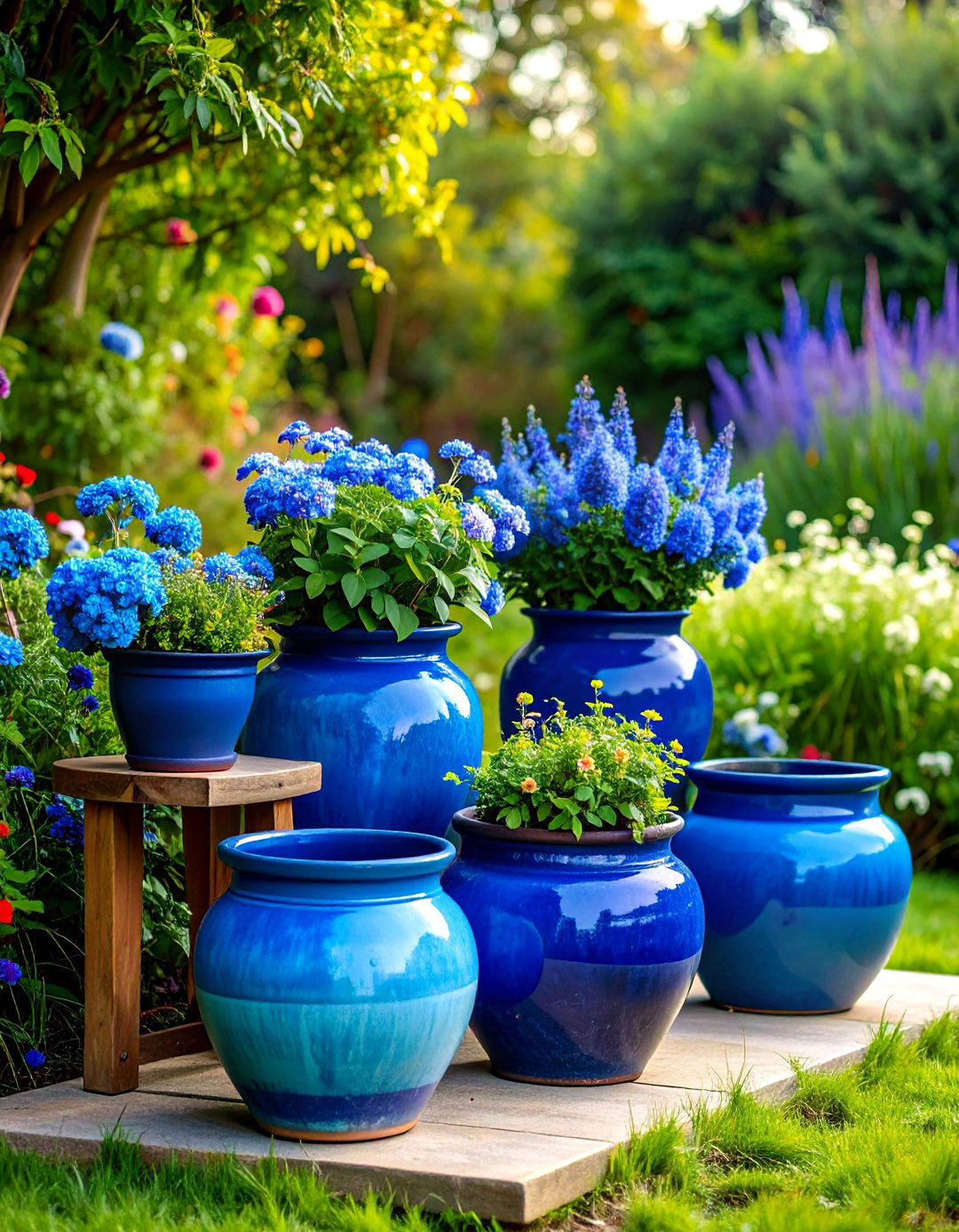
An ombre painted pot creates stunning visual depth by blending multiple shades of the same color family from light to dark. This technique works beautifully with blues transitioning from navy to sky blue, or warm tones moving from deep burgundy to soft pink. To achieve this effect, start with your darkest color at the bottom and gradually mix in white paint as you work upward, feathering each section while the paint remains wet. The key lies in working quickly and blending colors seamlessly before they dry. Consider using foam brushes for smoother transitions and always work from bottom to top for the most natural gradient appearance.
2. Marble Effect Painted Pot Elegant Swirls

A marble effect painted pot brings sophisticated elegance to any space through organic swirling patterns that mimic natural stone. Begin with a solid base color, then use a feathering brush or sea sponge to apply contrasting colors in irregular patches. White and gray combinations create classic marble looks, while navy and white offer a modern twist. The secret involves working with slightly damp paint and using gentle swirling motions to blend colors naturally. For authentic marble veining, drag a fine artist's brush through wet paint to create delicate lines. This technique requires patience but produces stunning results that elevate ordinary terracotta into artwork.
3. Geometric Stenciled Painted Pot Modern Patterns
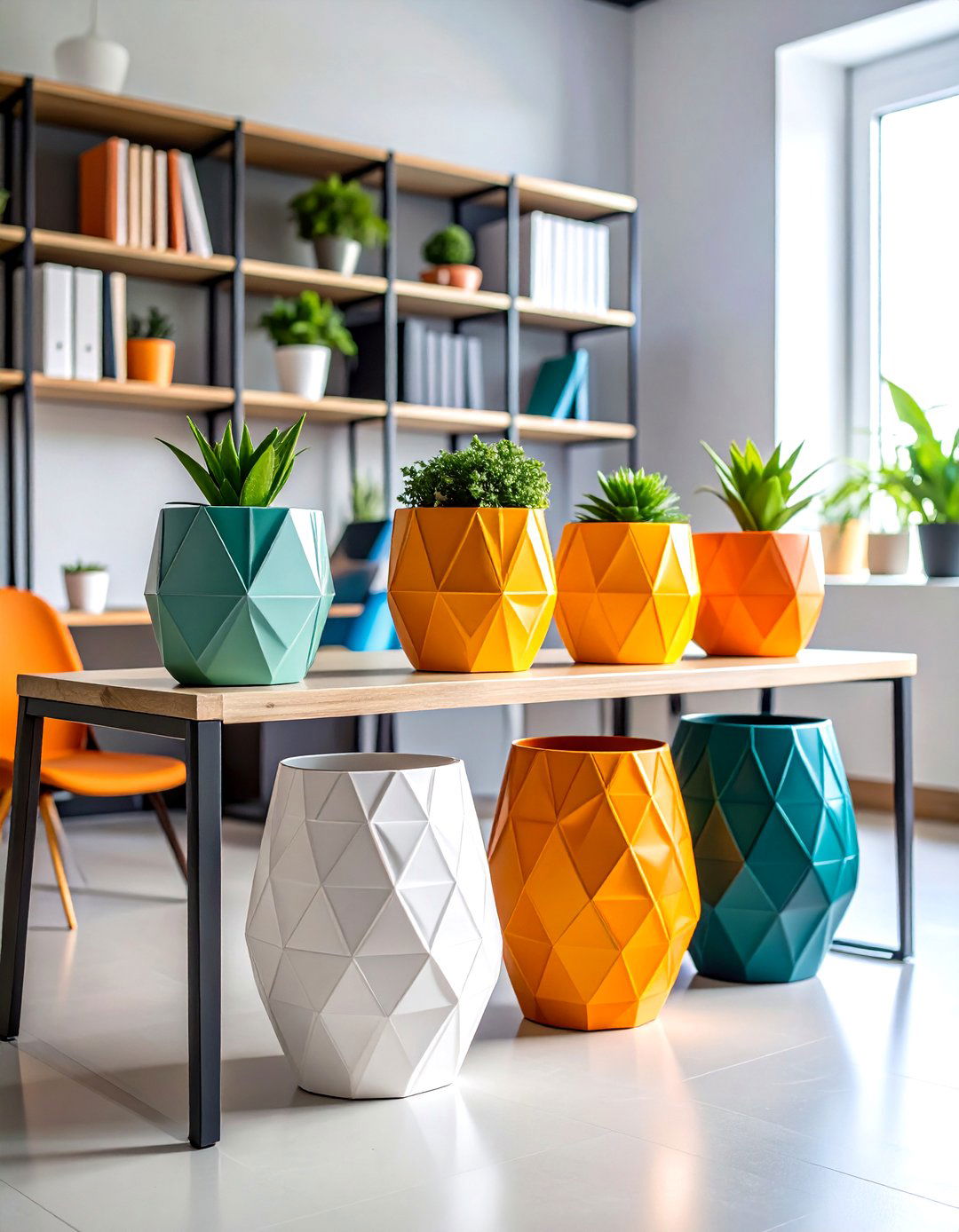
Geometric stenciled painted pots combine precision with creativity, producing clean, contemporary designs perfect for modern decor. Using vinyl stencils or painter's tape, create triangles, hexagons, chevrons, or custom patterns before applying contrasting paint colors. The key to crisp lines lies in pressing stencil edges firmly against the pot surface and using a stippling motion rather than brush strokes. Remove stencils while paint is slightly wet to prevent peeling. Consider monochromatic schemes for sophisticated appeal or bold color combinations for statement pieces. These painted pots work exceptionally well when grouped together, creating cohesive displays with varying geometric patterns that complement each other beautifully.
4. Chalkboard Painted Pot Interactive Labels
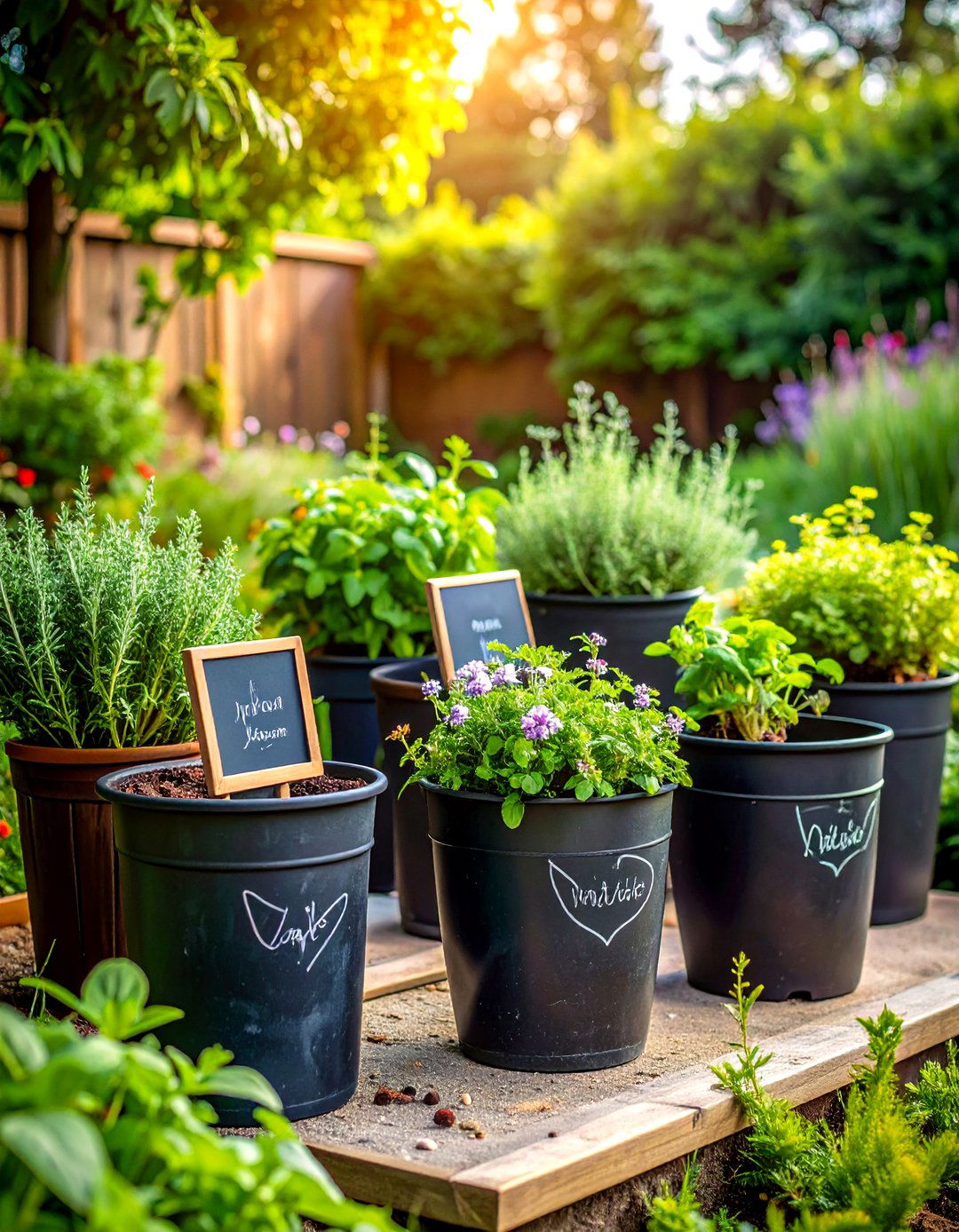
Chalkboard painted pots offer functional beauty by transforming containers into writeable surfaces perfect for plant identification or seasonal messages. Apply chalkboard paint evenly across the entire pot or create designated label sections using painter's tape. After proper curing time, prime the surface by rubbing chalk across it, then erasing completely before first use. These versatile painted pots excel in herb gardens where plant names change seasonally, or in children's rooms where little ones can draw directly on the surface. The matte black finish provides elegant contrast against colorful plants while maintaining practical functionality. Regular chalk or chalk markers both work wonderfully for writing on these customizable surfaces.
5. Galaxy Painted Pot Cosmic Wonder

Galaxy painted pots capture the mystique of outer space through layered cosmic colors and sparkling star effects. Start with a black base coat, then use dampened sponges to dab purple, blue, and pink in organic cloud-like formations. While colors remain slightly wet, blend edges for realistic nebula effects. Create stars by loading an old toothbrush with white paint and flicking bristles to splatter tiny dots across the surface. For added magic, incorporate glow-in-the-dark paint for stars that shine after sunset. These painted pots work beautifully with succulents or dark-leafed plants that complement the cosmic theme, creating conversation pieces that fascinate viewers day and night.
6. Splatter Painted Pot Artistic Chaos
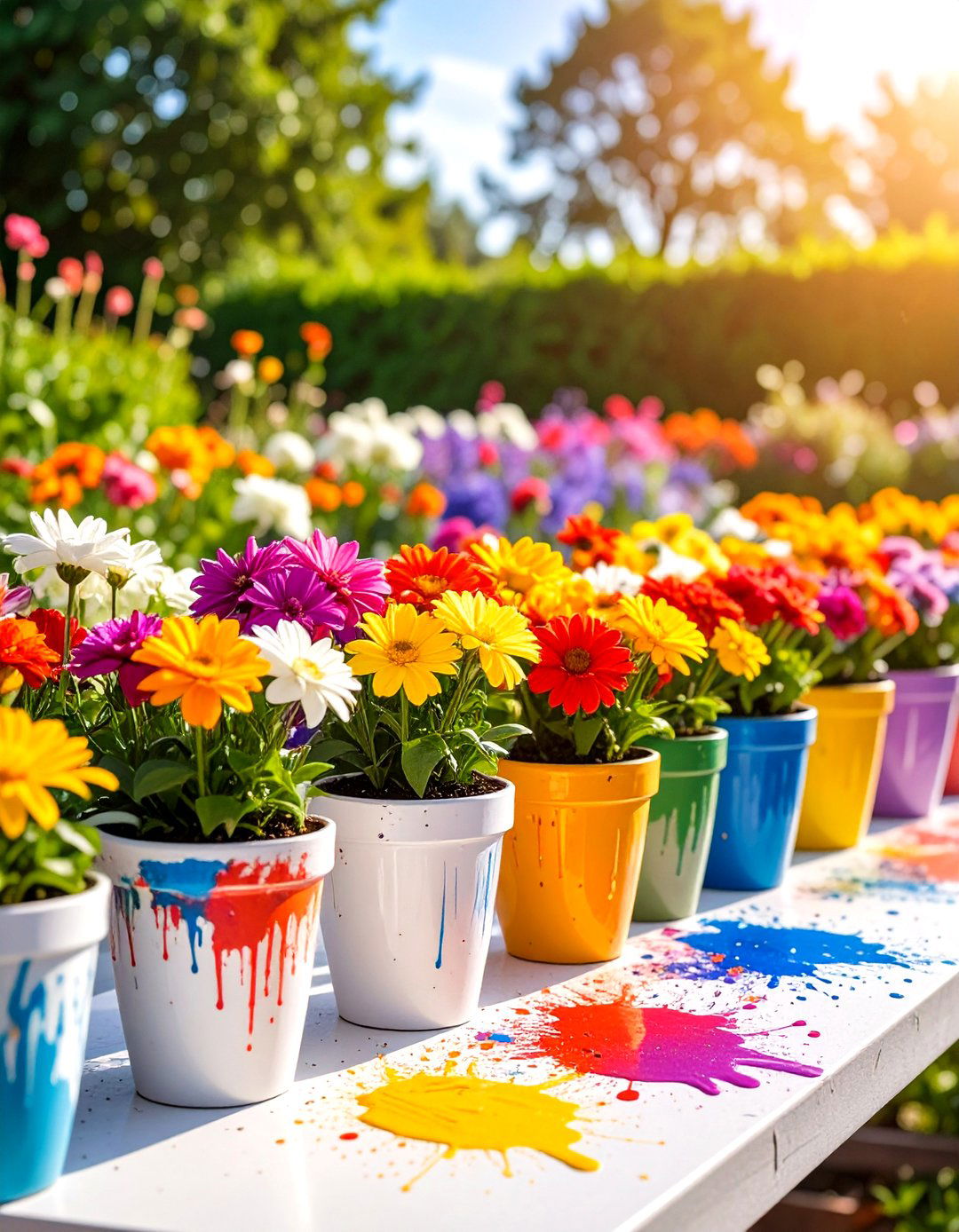
Splatter painted pots embrace controlled chaos through energetic paint applications that create dynamic, movement-filled designs. Using old toothbrushes, painting brushes, or even squeeze bottles, flick various paint colors across the pot surface in random patterns. Start with lighter base colors and build up with darker accent splatters for optimal contrast. Cover surrounding areas with newspaper to contain overspray. The beauty lies in the unpredictability – each splatter painted pot becomes completely unique. This technique particularly appeals to children and those who enjoy expressive, less structured art forms. Consider using complementary color schemes or limiting to two or three colors for more sophisticated results while maintaining the playful splatter aesthetic.
7. Tribal Pattern Painted Pot Cultural Inspiration
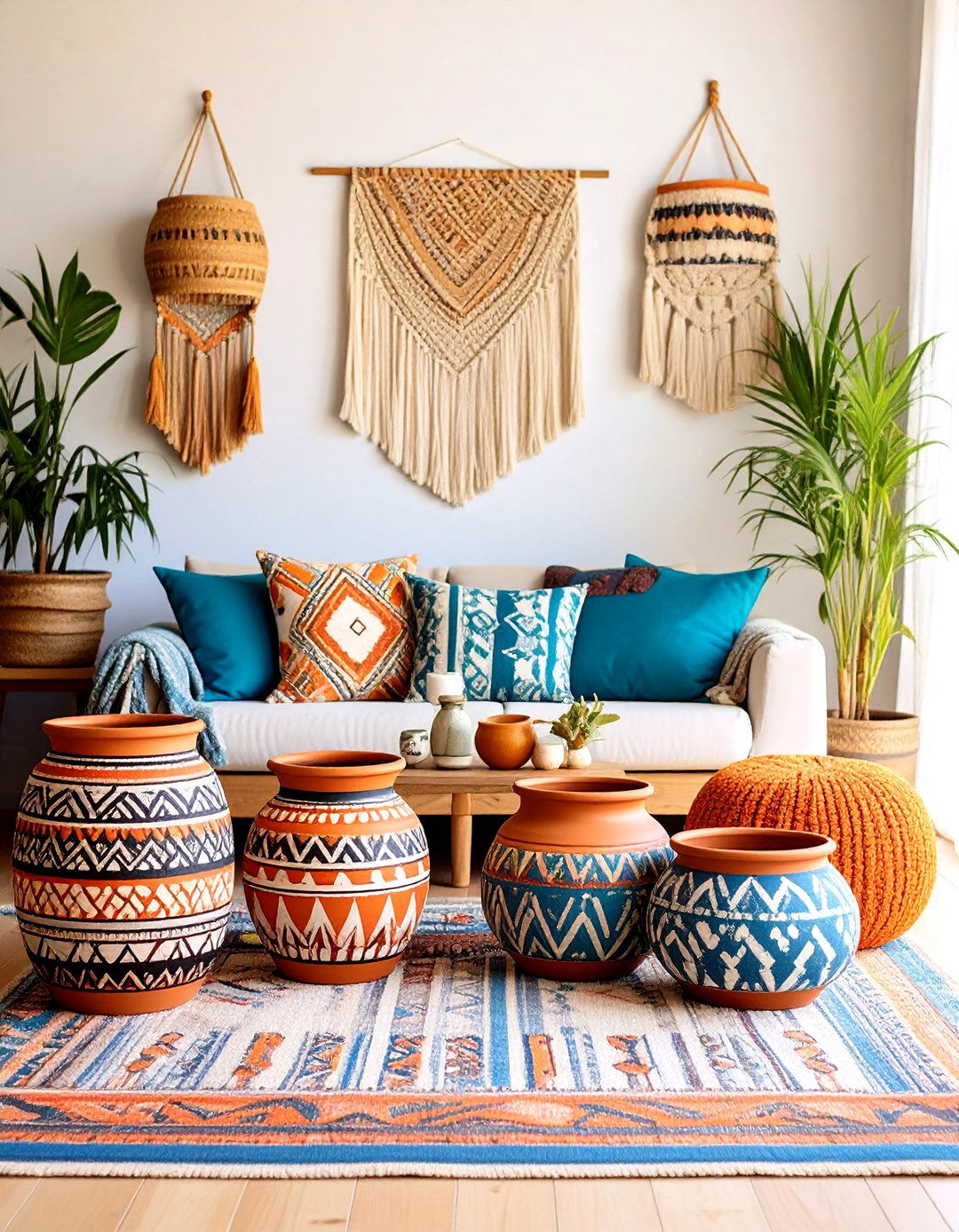
Tribal pattern painted pots draw from indigenous art traditions, featuring geometric designs, zigzags, and symbolic motifs that add global flair to any space. Using steady brush strokes or fine-tip paint markers, create repeating patterns inspired by African, Native American, or Aboriginal art styles. Start with earthy base colors like terracotta, deep brown, or forest green, then apply contrasting patterns in white, black, or metallic tones. These painted pots work exceptionally well in bohemian or eclectic decor schemes. Research respectfully represents various cultural traditions rather than appropriating sacred symbols. Consider incorporating multiple painted pots with coordinating tribal patterns to create a cohesive collection that celebrates artistic heritage.
8. Metallic Painted Pot Luxurious Shine
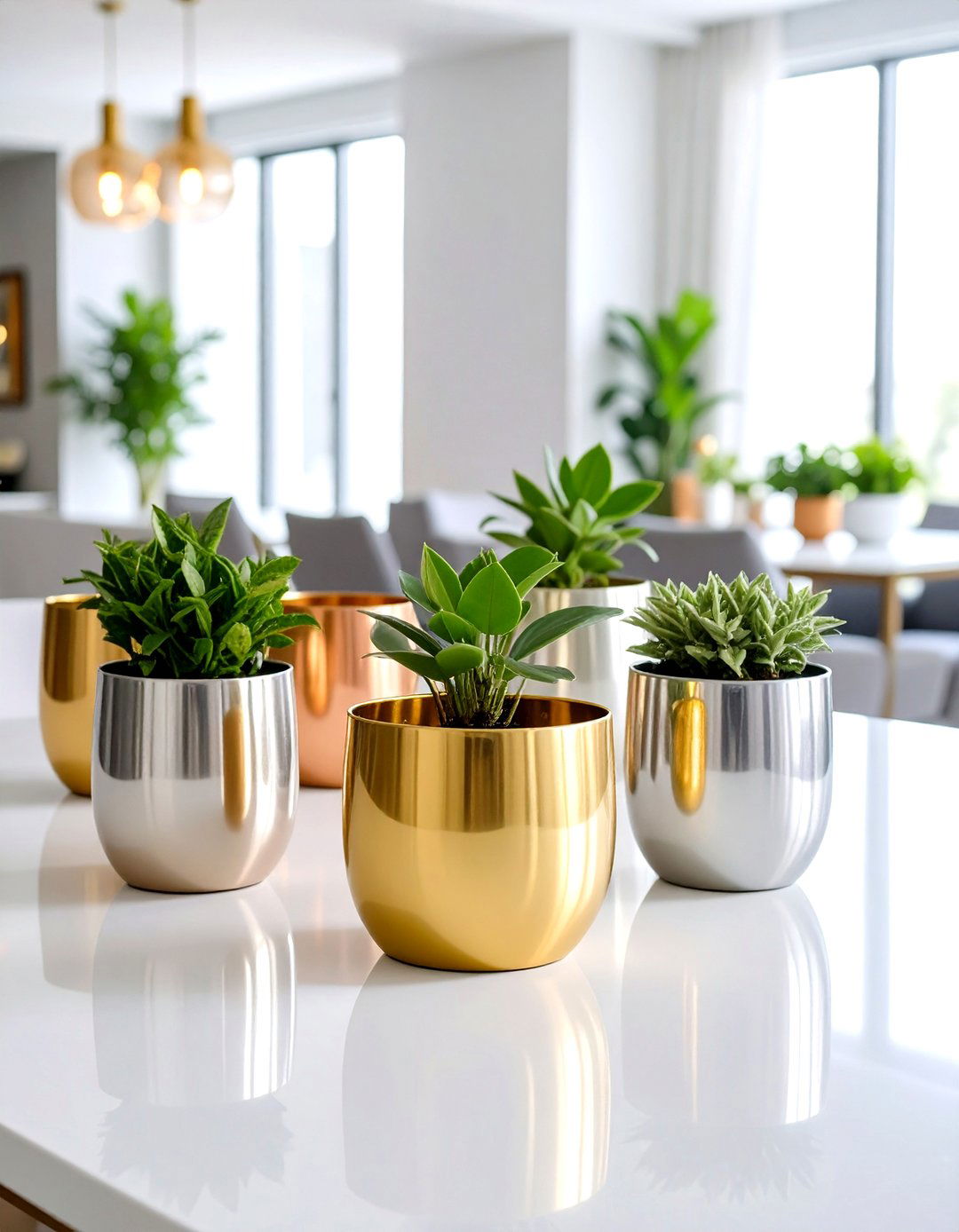
Metallic painted pots instantly elevate ordinary terracotta into glamorous accents that catch and reflect light beautifully. Gold, silver, copper, and bronze finishes each offer distinct personalities – gold adds warmth, silver provides modern coolness, copper brings rustic charm, and bronze suggests vintage elegance. Apply thin, even coats using foam brushes to avoid brush marks, allowing complete drying between applications. For subtle sophistication, consider dry-brushing metallic highlights over solid base colors rather than full metallic coverage. These painted pots complement both contemporary and traditional settings while adding luxury touches to plant displays. Pair metallic pots with plants having silver or variegated foliage for coordinated, high-end garden styling.
9. Dot Mandala Painted Pot Meditative Circles
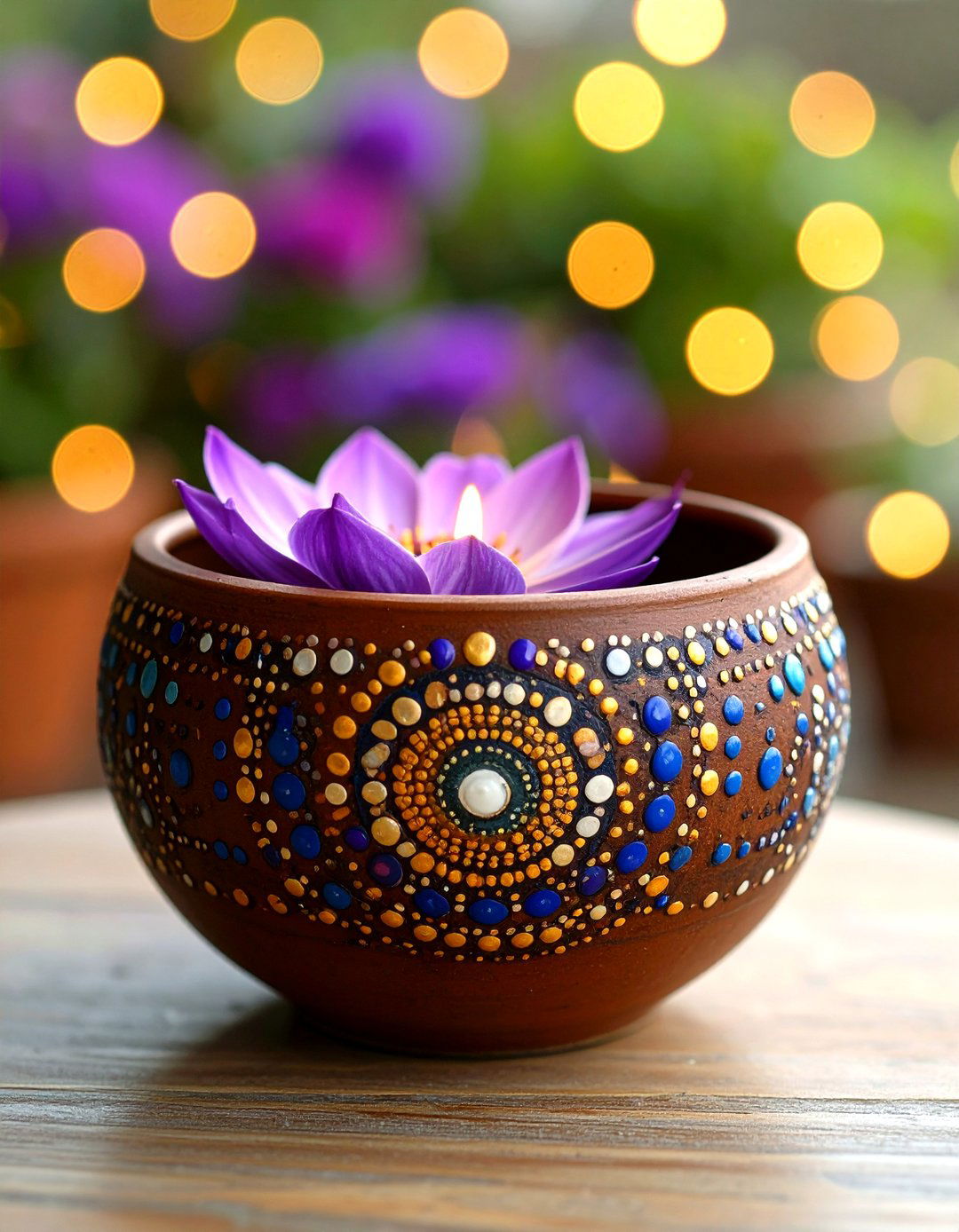
Dot mandala painted pots combine artistic beauty with meditative creation processes, using countless small dots to form intricate circular patterns. Begin with a center point and work outward in concentric circles, using dotting tools, cotton swabs, or brush handles dipped in paint. This technique requires patience but produces stunning results that showcase both precision and creativity. Traditional mandala colors include blues, purples, and golds, though any color combination works beautifully. The repetitive dotting motion becomes almost therapeutic, making these painted pots as enjoyable to create as they are to display. Consider varying dot sizes and spacing to add visual interest while maintaining the balanced, symmetrical nature essential to mandala design.
10. Color-Blocked Painted Pot Bold Sections
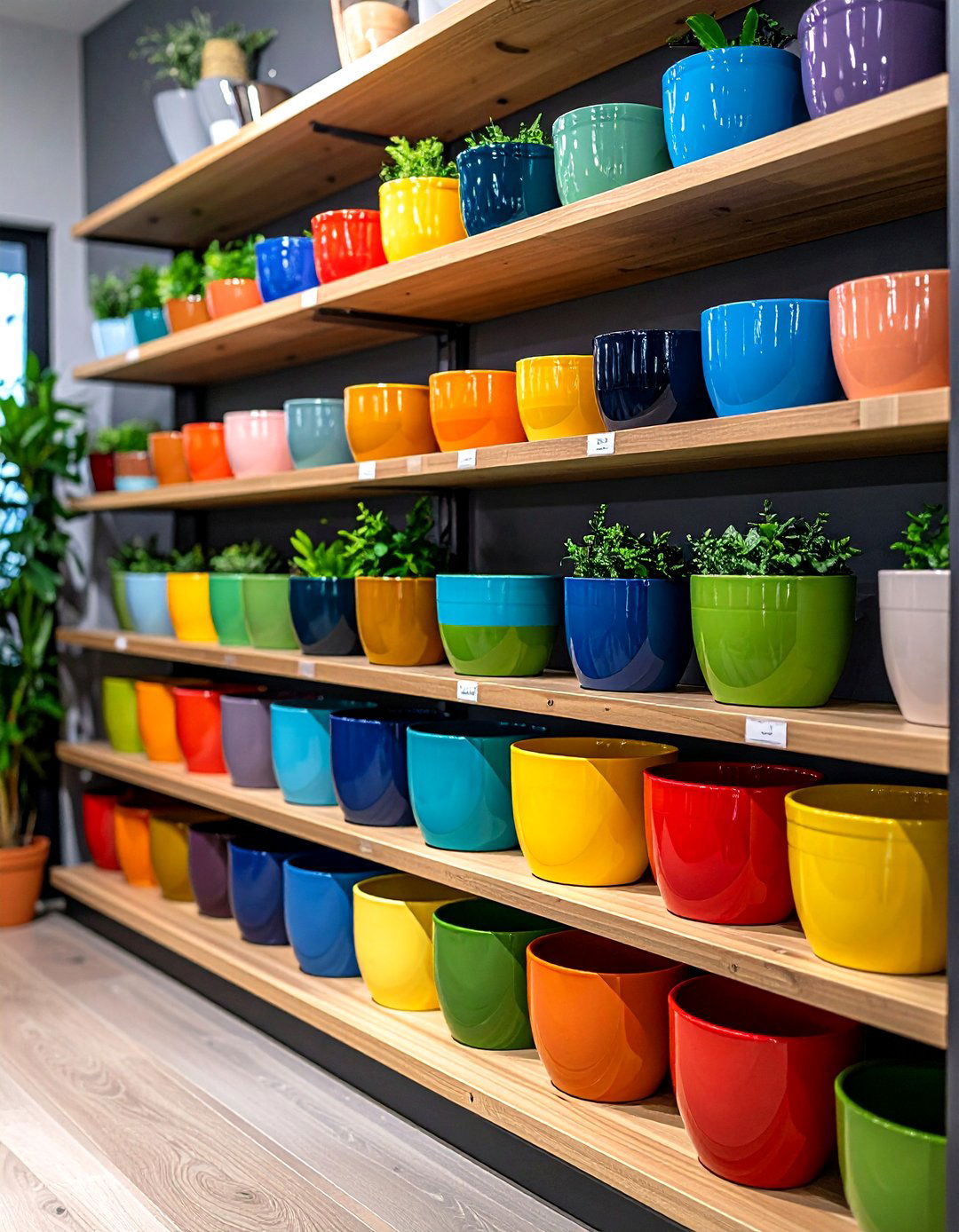
Color-blocked painted pots feature distinct sections of solid colors separated by clean lines, creating modern, graphic appearances perfect for contemporary spaces. Use painter's tape to mask off geometric sections, then fill each area with different but coordinating colors. Remove tape while paint remains slightly wet for crisp edges. This technique works beautifully with analogous color schemes (colors next to each other on the color wheel) or bold complementary contrasts. Consider creating horizontal bands, vertical stripes, or diagonal divisions for varied effects. These painted pots look particularly striking when grouped in odd numbers with coordinating but different color-blocking patterns, creating cohesive yet dynamic displays.
11. Polka Dot Painted Pot Playful Spots
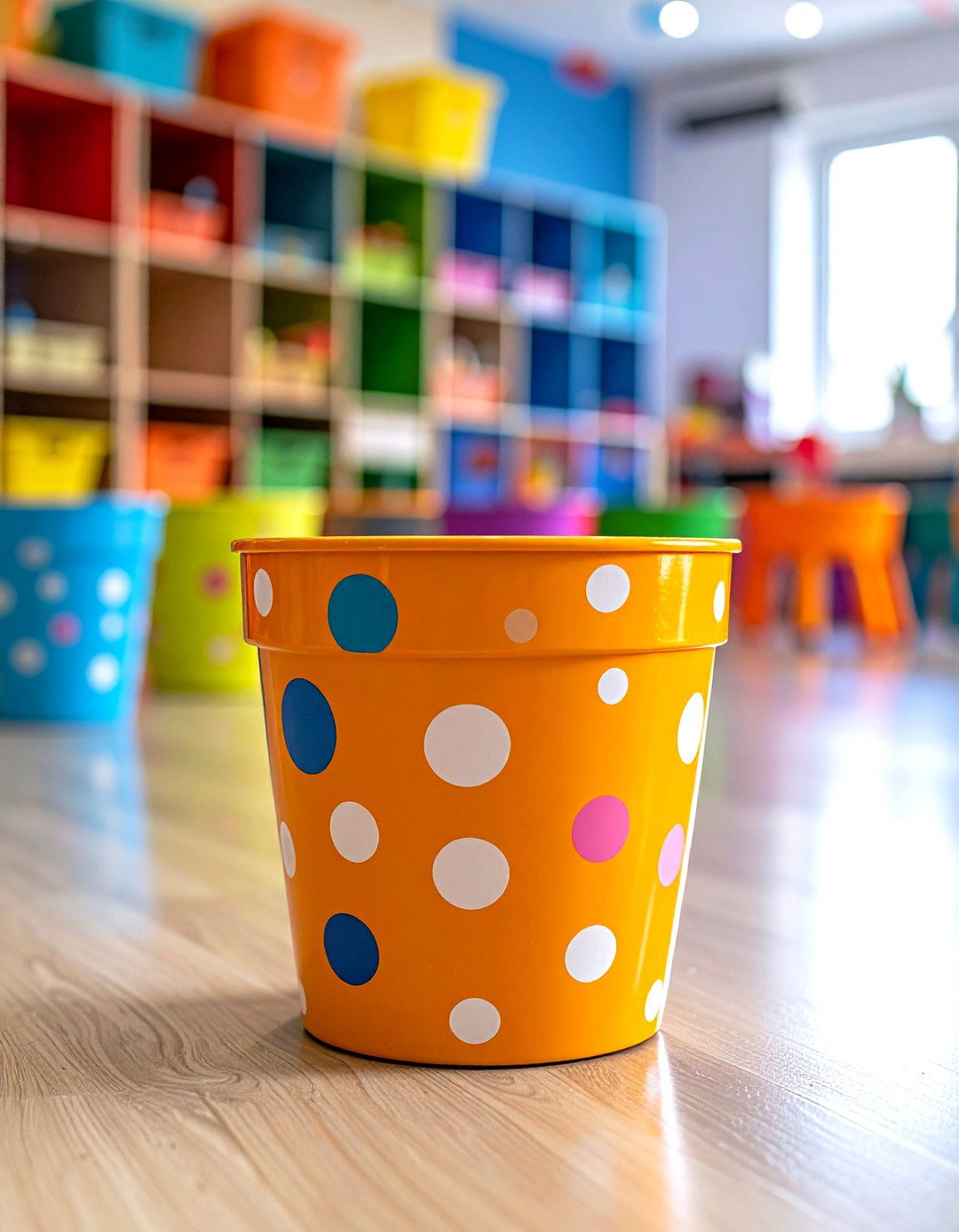
Polka dot painted pots bring whimsical charm through scattered circular patterns that add playful energy to any setting. Create perfect dots using round sponges, pencil erasers, or specially designed dotting tools dipped in contrasting paint colors. For organic appeal, vary dot sizes and spacing rather than maintaining rigid uniformity. These painted pots work wonderfully in children's rooms, kitchens, or anywhere cheerful accents are desired. Consider monochromatic schemes for sophistication or rainbow combinations for maximum fun. The key lies in maintaining consistent paint coverage for each dot while allowing adequate drying time between colors. Group multiple polka dot painted pots with different base colors but similar dot treatments for coordinated collections.
12. Gradient Painted Pot Smooth Transitions
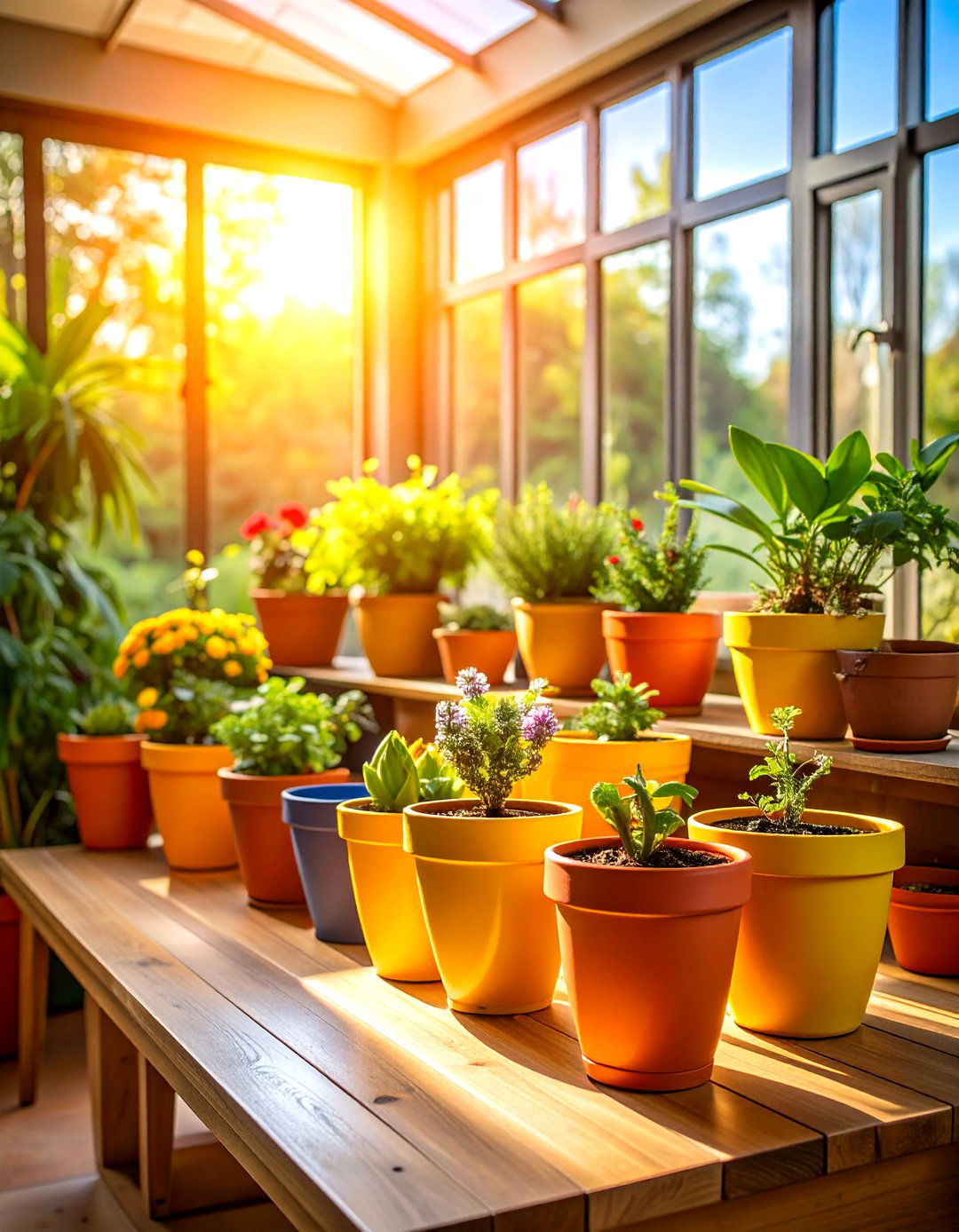
Gradient painted pots feature seamless color transitions that flow from one hue to another, creating sophisticated ombre effects across the entire surface. Unlike traditional ombre techniques, gradients can move between completely different colors rather than light-to-dark variations of the same shade. Work with wet paint, blending colors while still workable using clean, damp brushes. The technique requires timing and patience but produces professional-looking results. Consider sunset gradients moving from yellow through orange to deep red, or ocean themes transitioning from turquoise to deep navy. These painted pots serve as artistic focal points while complementing plants with colors that echo the gradient scheme for harmonious, designer-quality displays.
13. Textured Painted Pot Dimensional Interest
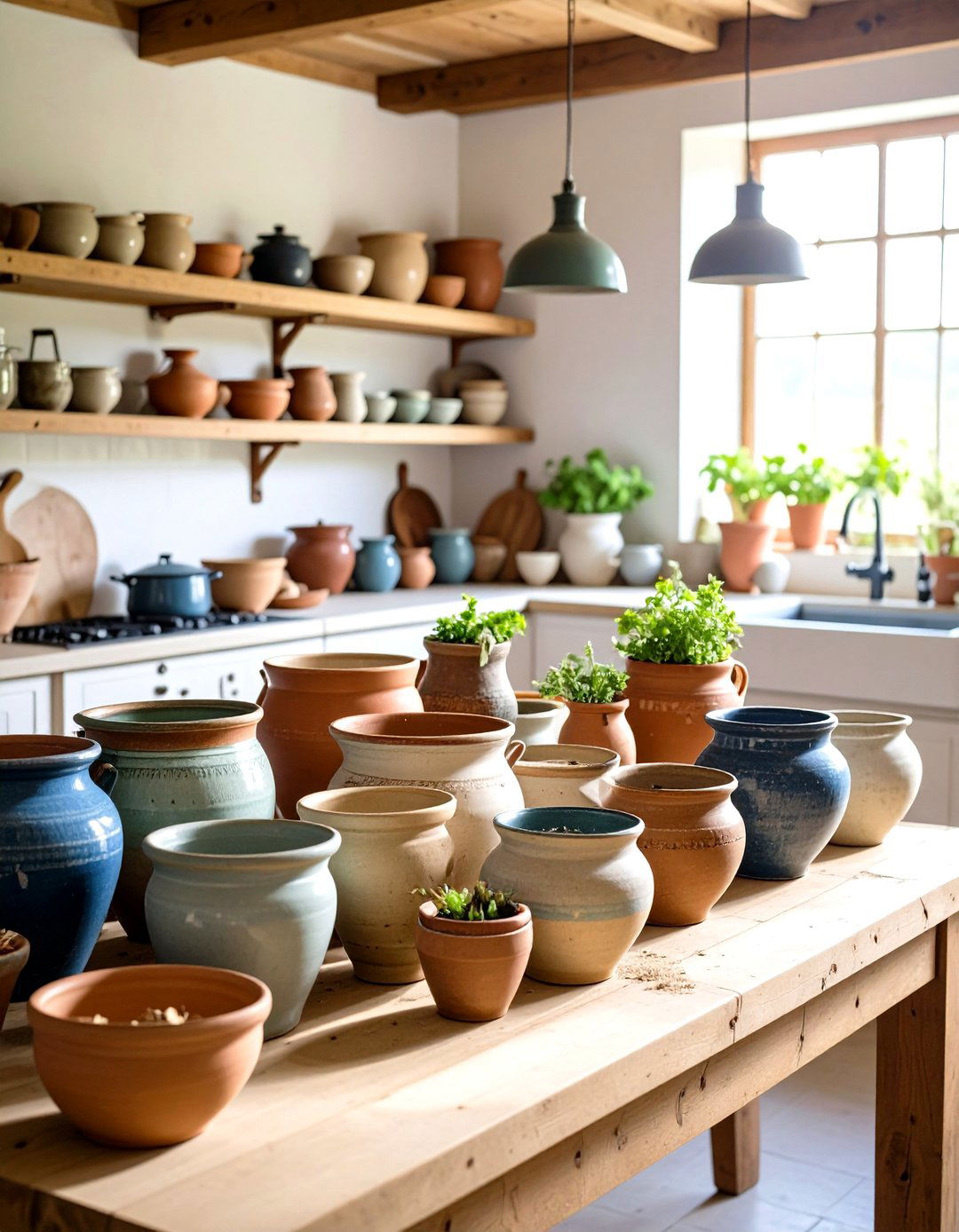
Textured painted pots incorporate raised surfaces and varied finishes that add tactile interest beyond simple color application. Create texture using thick paint applications, sponging techniques, or adding sand, fabric, or other materials to wet paint. Crackle mediums produce aged, weathered appearances while maintaining paint adhesion. Dry-brushing techniques highlight raised areas for added dimension. These painted pots work particularly well in rustic, farmhouse, or vintage-inspired settings where imperfection adds character. Consider combining smooth and textured sections for contrast, or maintain consistent texture throughout for unified appearances. The dimensional quality catches light differently throughout the day, creating dynamic visual interest that changes with lighting conditions.
14. Vintage Decoupage Painted Pot Nostalgic Charm
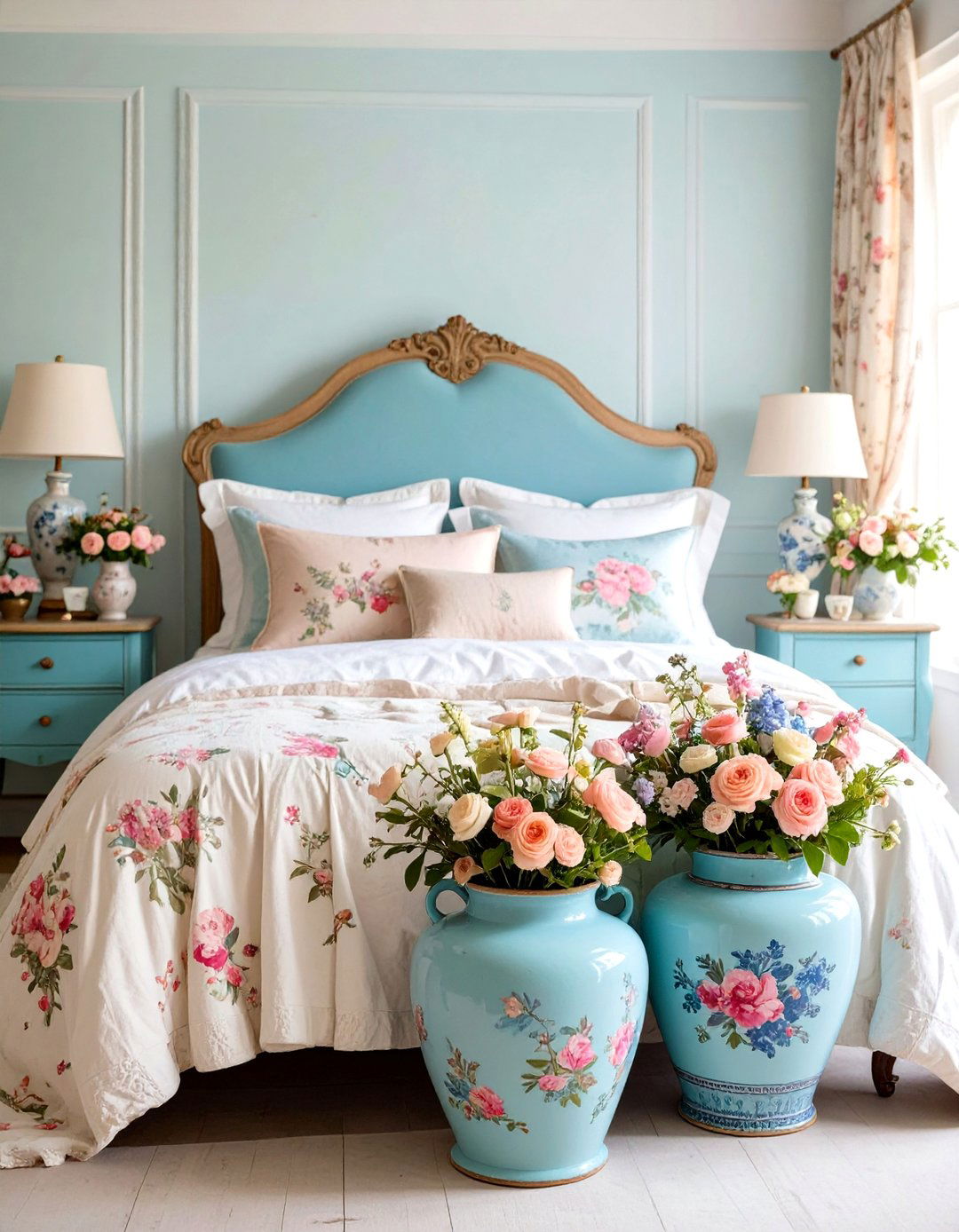
Vintage decoupage painted pots combine paint with decorative paper elements, creating nostalgic pieces that blend multiple artistic techniques. Start with painted base colors, then apply vintage-inspired papers, maps, sheet music, or botanical prints using decoupage medium. The painted elements provide background color while paper adds detailed imagery and texture. This technique allows incorporation of personal meaningful elements like family photos or meaningful text. Seal completed projects with multiple coats of protective finish for durability. These painted pots work beautifully in shabby chic, cottage, or eclectic decor styles. Consider aging techniques like light sanding or antiquing glazes to enhance the vintage aesthetic and create authentic-looking patina.
15. Herringbone Painted Pot Sophisticated Patterns
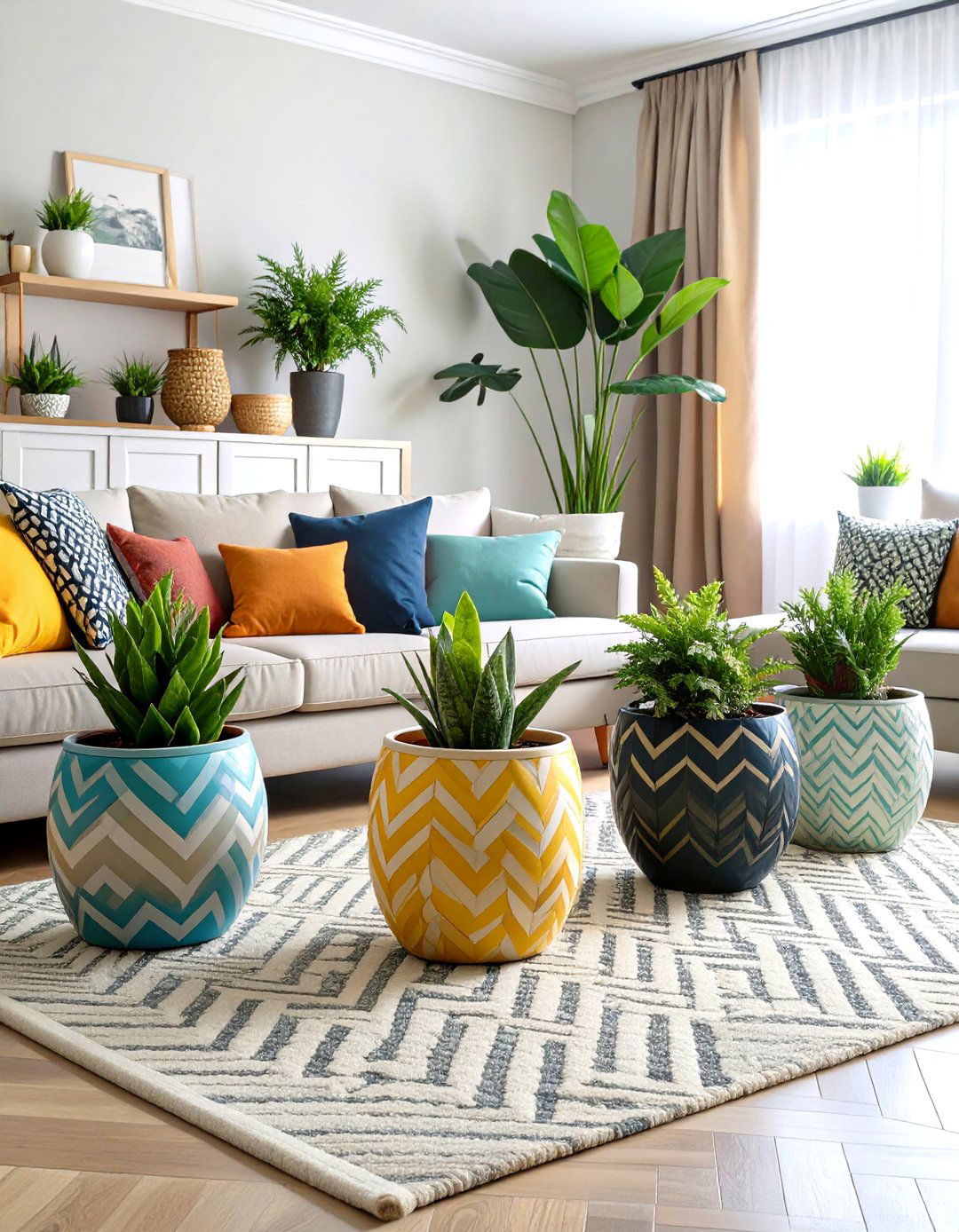
Herringbone painted pots feature zigzag patterns that add sophisticated geometric interest through carefully planned angular designs. Create templates using painter's tape arranged in classic herringbone configurations, then paint alternating sections in contrasting colors. The key lies in precise tape placement and maintaining consistent angles throughout the pattern. This technique works beautifully in neutral color schemes for subtle sophistication or bold contrasts for dramatic impact. These painted pots complement modern farmhouse, traditional, and transitional decor styles equally well. Consider varying scale by creating large or small herringbone patterns depending on pot size, and group multiple painted pots with consistent patterns but different color combinations for coordinated displays.
16. Abstract Painted Pot Artistic Expression
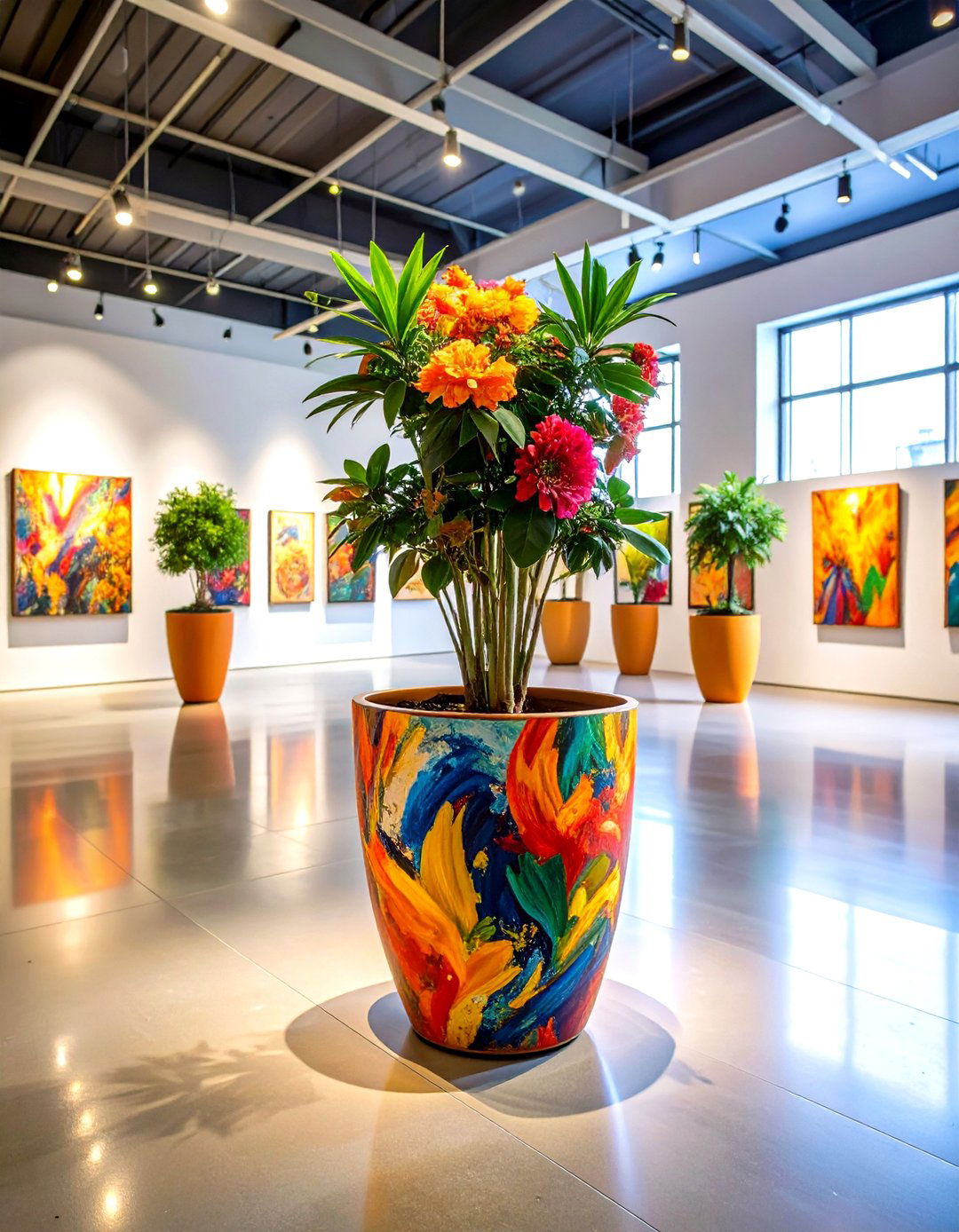
Abstract painted pots embrace creative freedom through non-representational designs that prioritize color, form, and emotion over realistic imagery. Use brushes, palette knives, or unconventional tools to apply paint in expressive strokes, swirls, or geometric forms. This technique allows complete artistic freedom while producing unique, one-of-a-kind pieces. Consider color theory principles – warm colors for energy, cool colors for calm, or complementary contrasts for vibration. These painted pots work particularly well in contemporary, modern, or eclectic settings where artistic expression takes precedence over traditional decorating rules. The beauty lies in the personal nature of abstract work, ensuring no two painted pots will ever look identical.
17. Minimalist Painted Pot Clean Simplicity
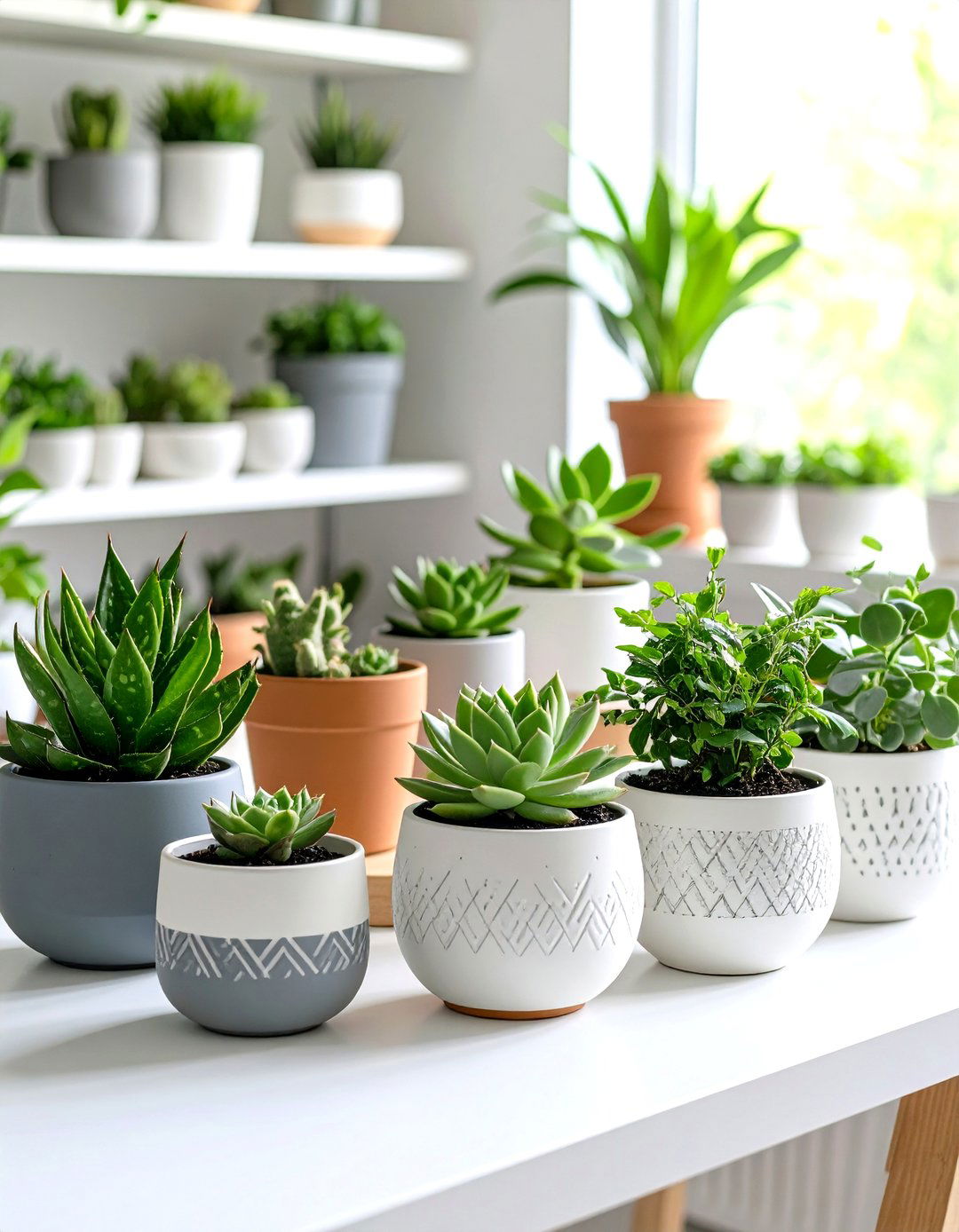
Minimalist painted pots embrace "less is more" philosophy through restrained color palettes and clean, uncluttered designs. Focus on single colors, subtle tone variations, or simple geometric elements that don't overwhelm the pot's natural form. White, gray, black, and natural earth tones work particularly well for this aesthetic. The key lies in precision and restraint rather than elaborate decoration. These painted pots complement modern, Scandinavian, or contemporary minimalist decor perfectly while allowing plants to remain the primary visual focus. Consider matte finishes for authentic minimalist appeal, and group odd numbers of similar painted pots with slight variations for sophisticated, gallery-like displays that emphasize form over decoration.
18. Drip Painted Pot Flowing Movement
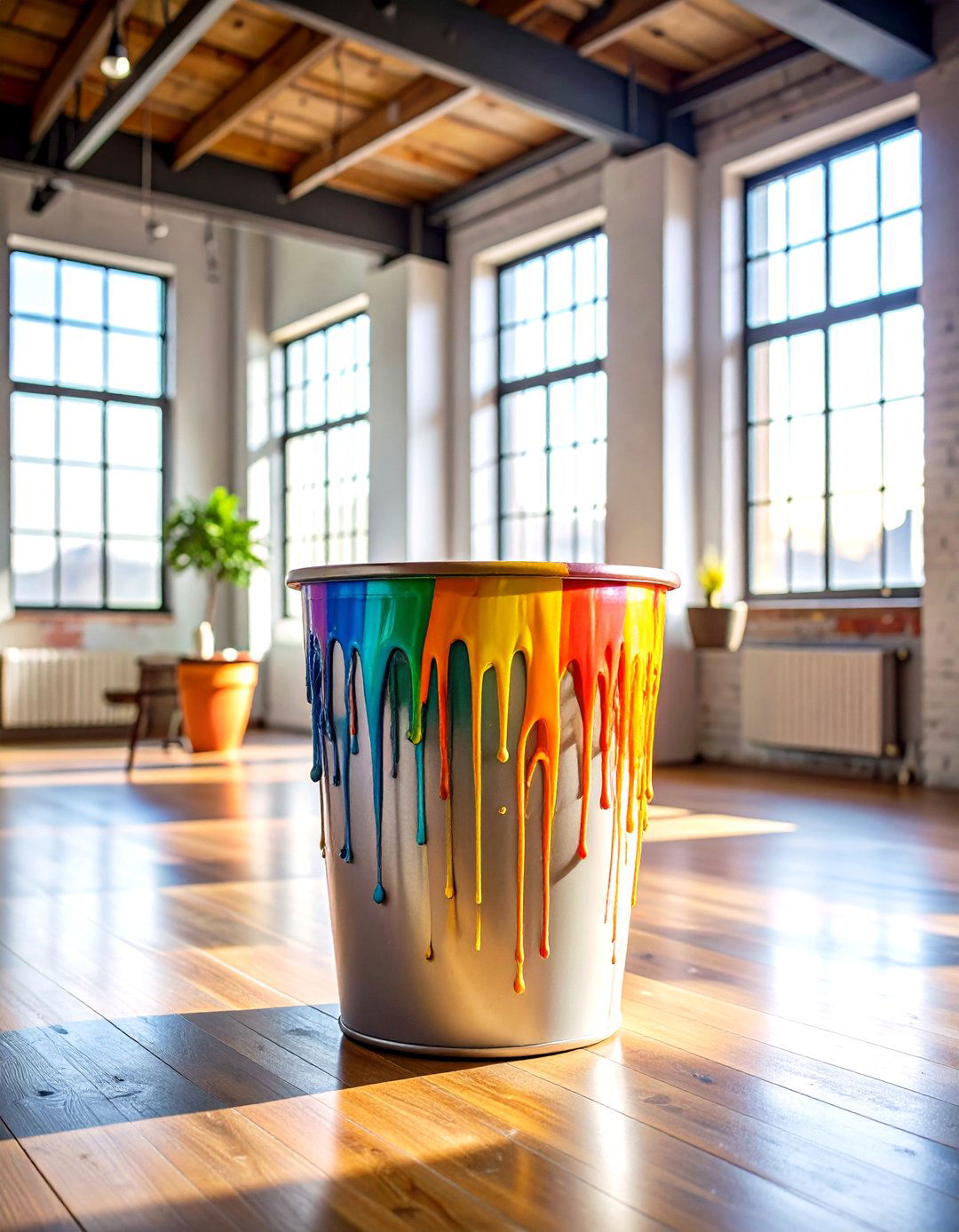
Drip painted pots capture dynamic movement through controlled paint flows that create organic, flowing patterns down the pot surfaces. Start with base colors, then allow contrasting paints to drip naturally from the rim downward, creating unique streaking patterns. Control drip speed by thinning paint with water or extending working time. The technique produces different results each time, ensuring unique outcomes. These painted pots work well in contemporary, industrial, or artistic settings where creative expression is valued. Consider using gravity to your advantage by positioning pots at angles during painting, or create multiple drip layers in different colors for complex, layered effects that showcase both planning and happy accidents.
19. Crackle Painted Pot Aged Character

Crackle painted pots achieve aged, weathered appearances through specialized mediums that create authentic-looking cracks and texture. Apply base colors, then use crackle medium according to manufacturer directions before adding top coats. The crackling effect occurs as paint dries, revealing base colors through natural-looking fissures. This technique works beautifully for vintage, farmhouse, or shabby chic aesthetics where aged character adds authenticity. These painted pots pair wonderfully with antique or vintage decor elements. Consider highlighting cracks with darker colors rubbed into crevices for enhanced contrast, or leave natural for subtle aging effects. The unpredictable nature of crackling ensures each painted pot develops unique character patterns.
20. Mosaic-Inspired Painted Pot Tessellated Beauty
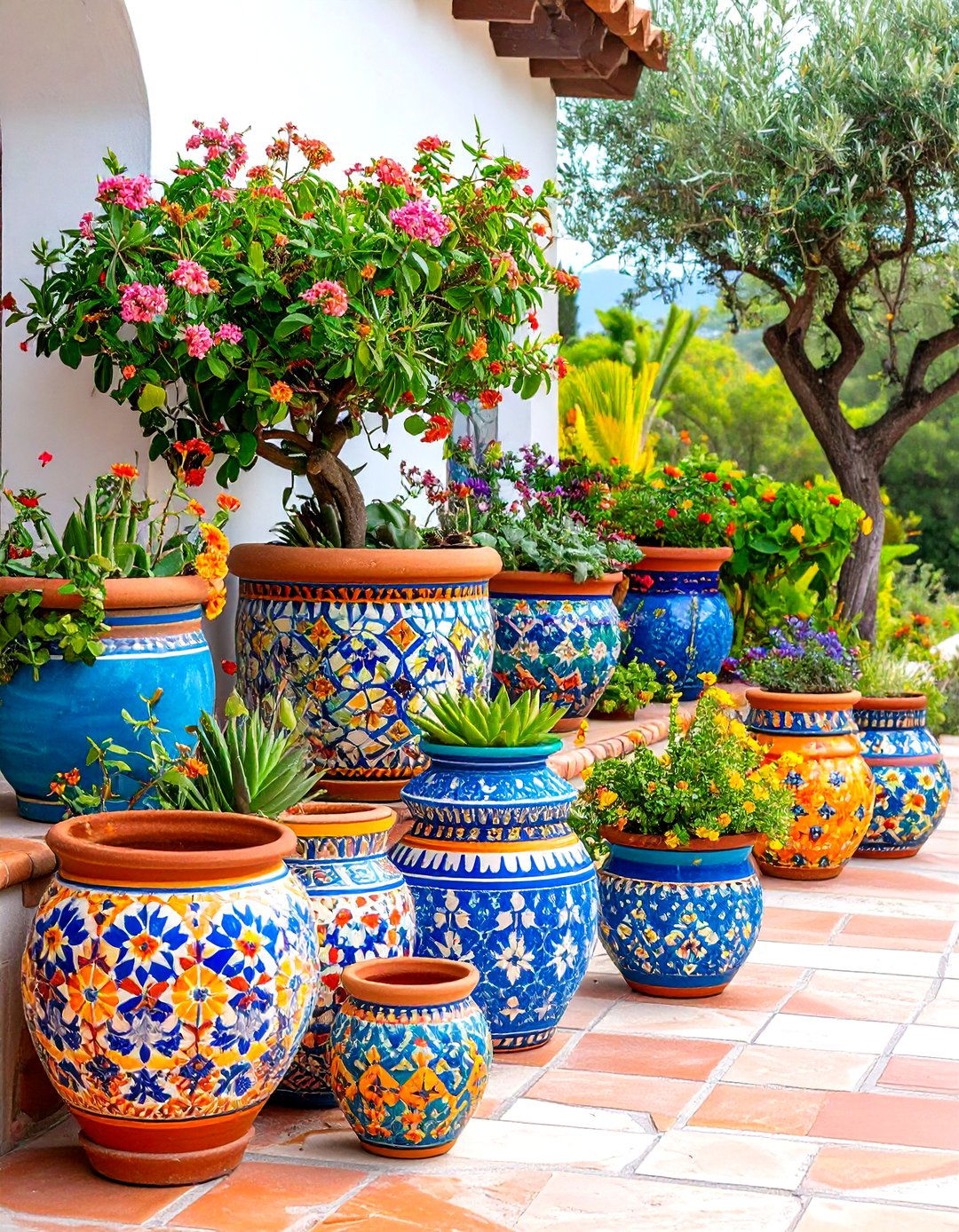
Mosaic-inspired painted pots recreate the appearance of traditional tile mosaics using paint techniques that simulate broken pottery or glass effects. Create irregular geometric shapes using painter's tape, then fill each section with different but coordinating colors. Add thin painted lines between sections to simulate grout for authentic mosaic appearance. This technique allows the beauty of traditional mosaics without the complexity of actual tile application. These painted pots work wonderfully in Mediterranean, eclectic, or artistic settings where handcrafted details are appreciated. Consider varying section sizes and using graduated color schemes for sophisticated results, or embrace bold, contrasting colors for vibrant, statement-making pieces that capture attention and admiration.
Conclusion:
These twenty painted pot ideas demonstrate the incredible versatility and creative potential of simple terracotta containers. From elegant ombre effects to playful splatter techniques, each approach offers unique ways to express personal style while enhancing your living spaces. Whether you prefer sophisticated minimalist designs or bold abstract expressions, painted pots provide affordable opportunities to create custom decorative pieces that perfectly complement your home's aesthetic. The beauty lies not only in the finished products but also in the meditative, creative process of transformation, turning ordinary garden containers into extraordinary artistic statements.


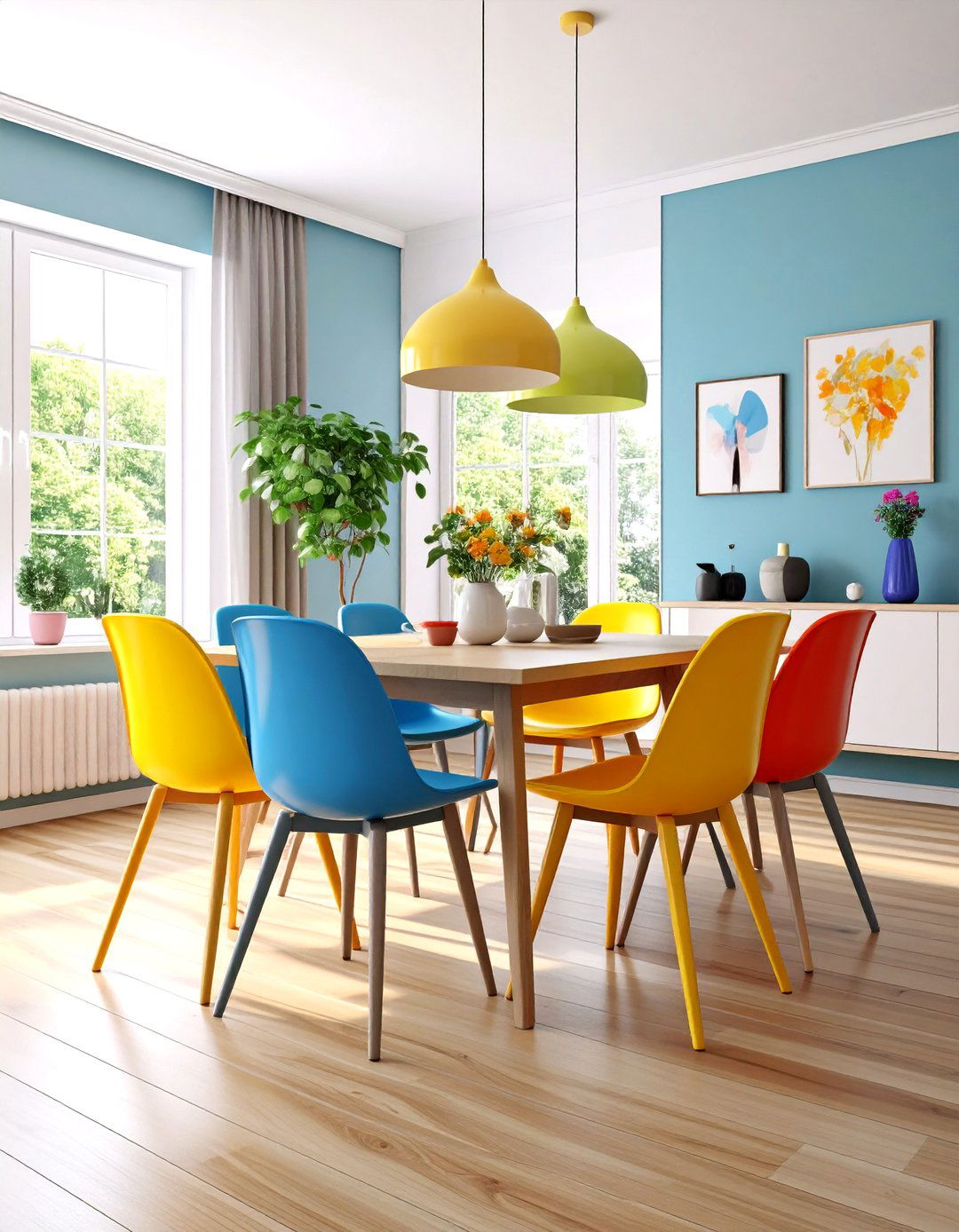

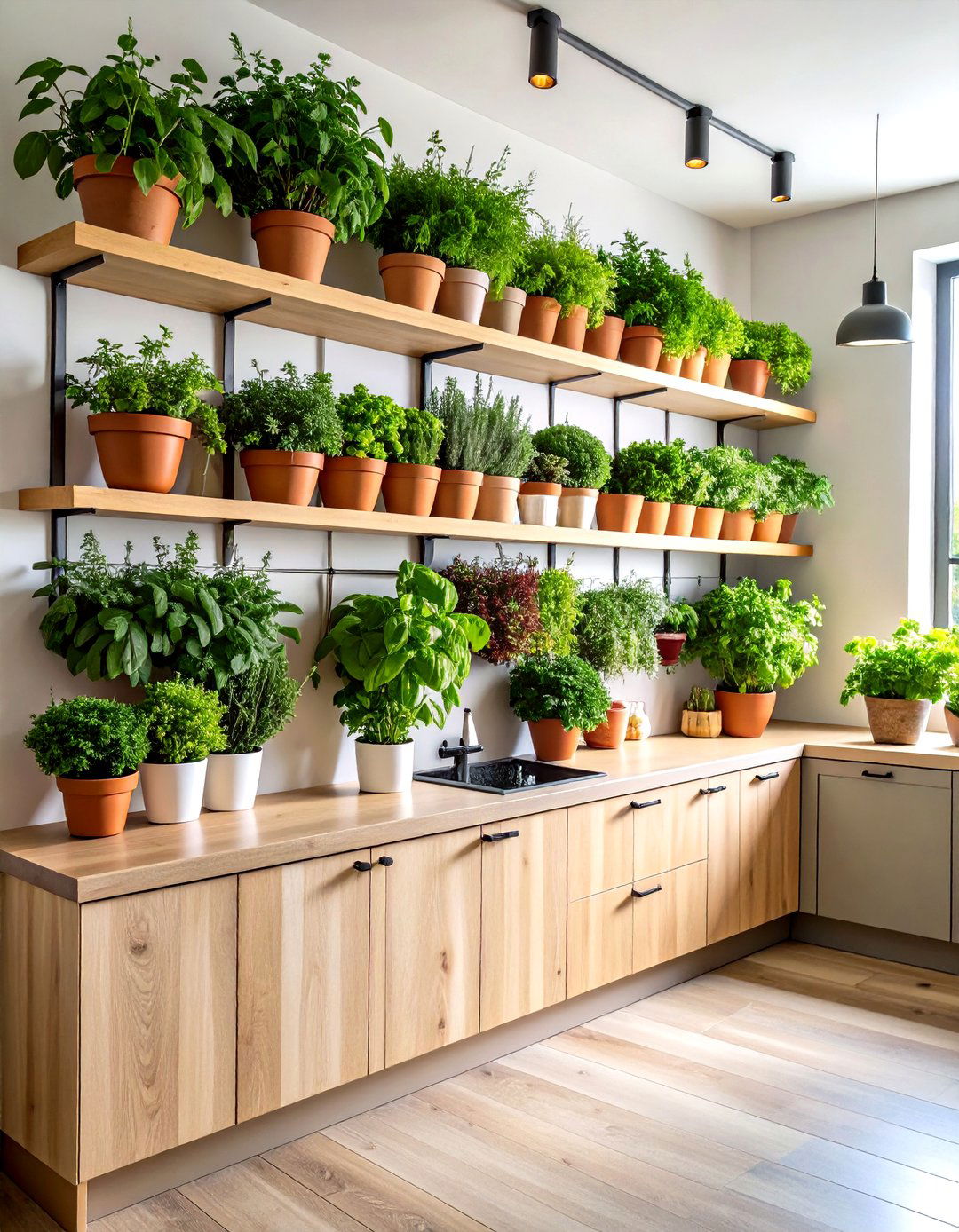
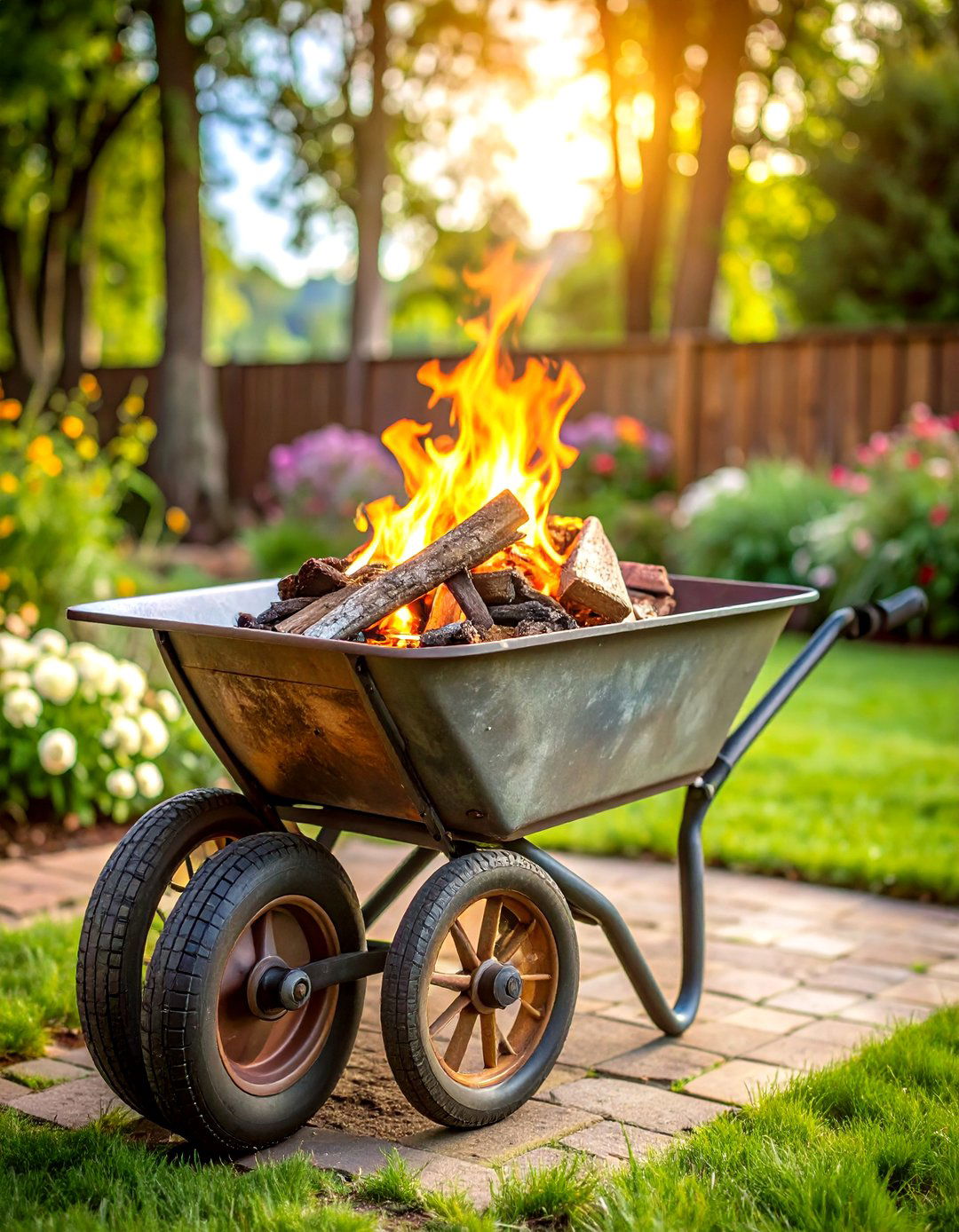
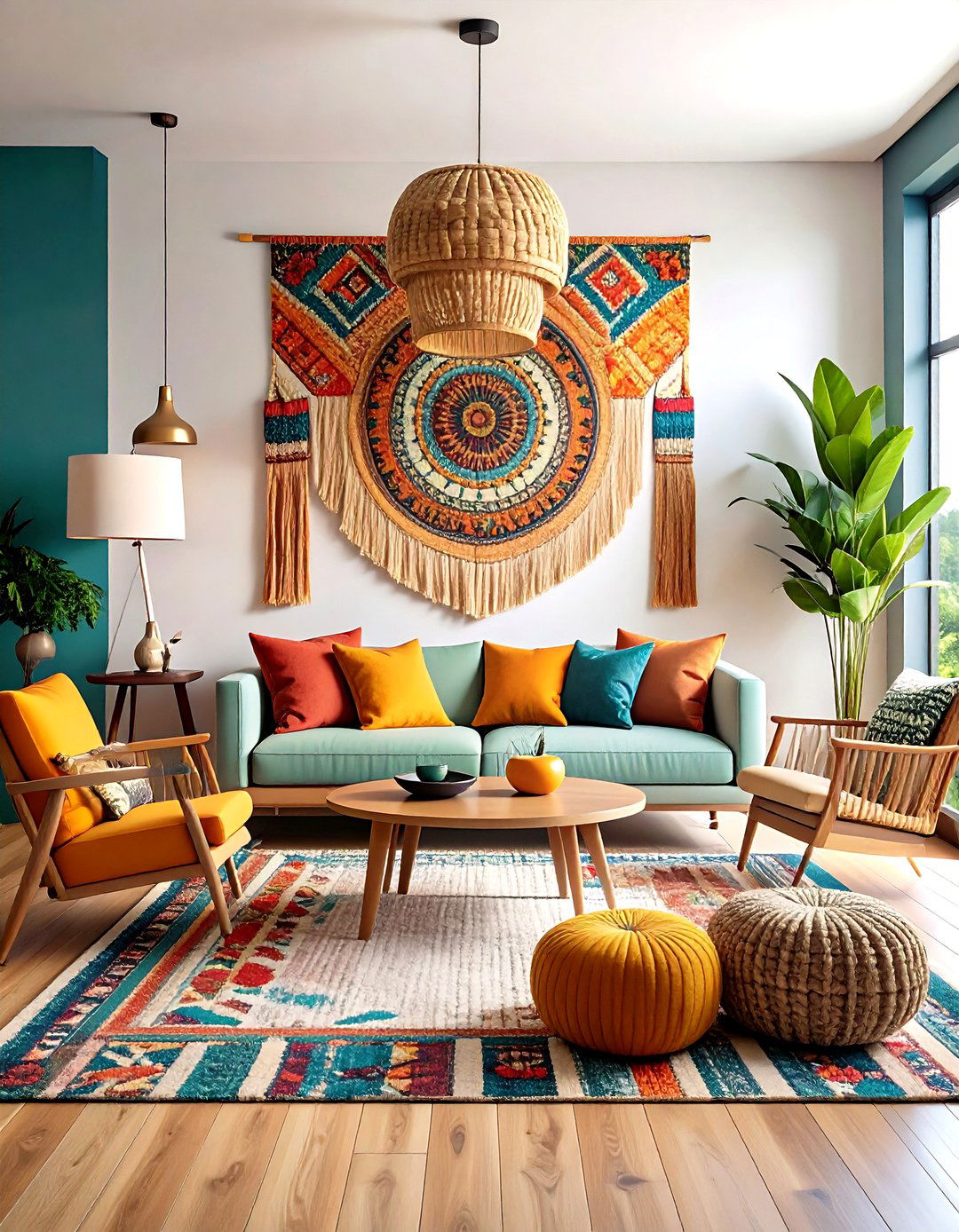
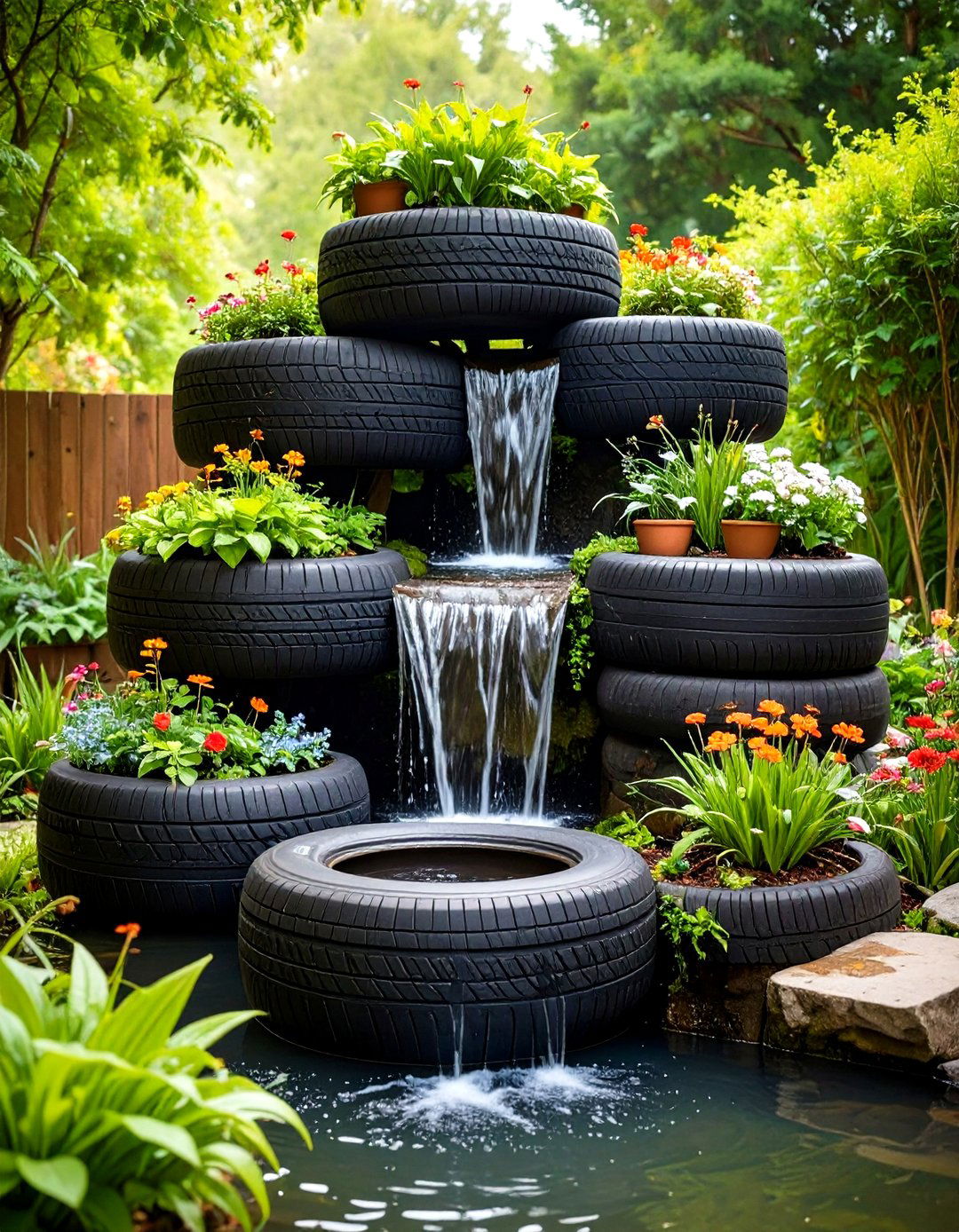
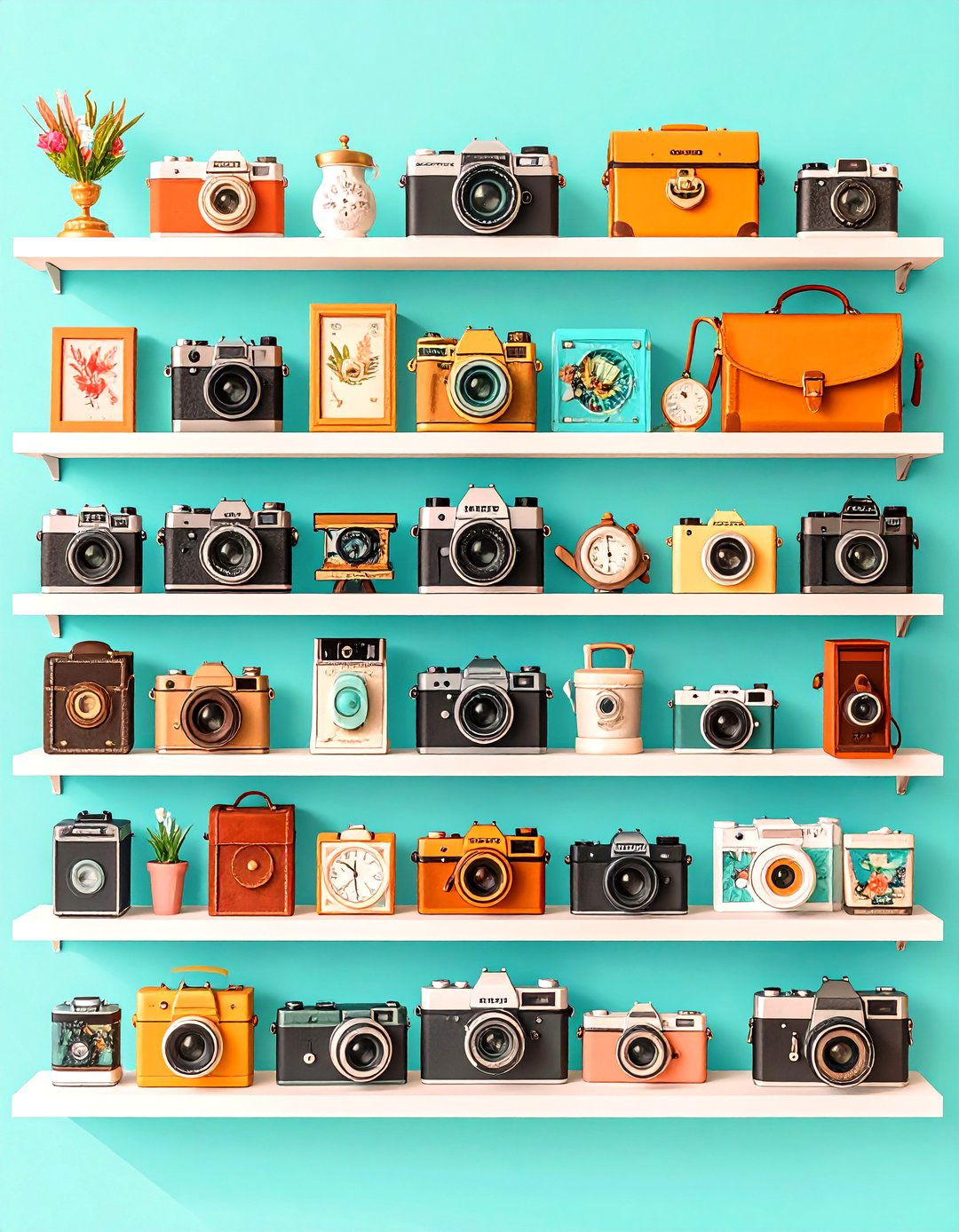
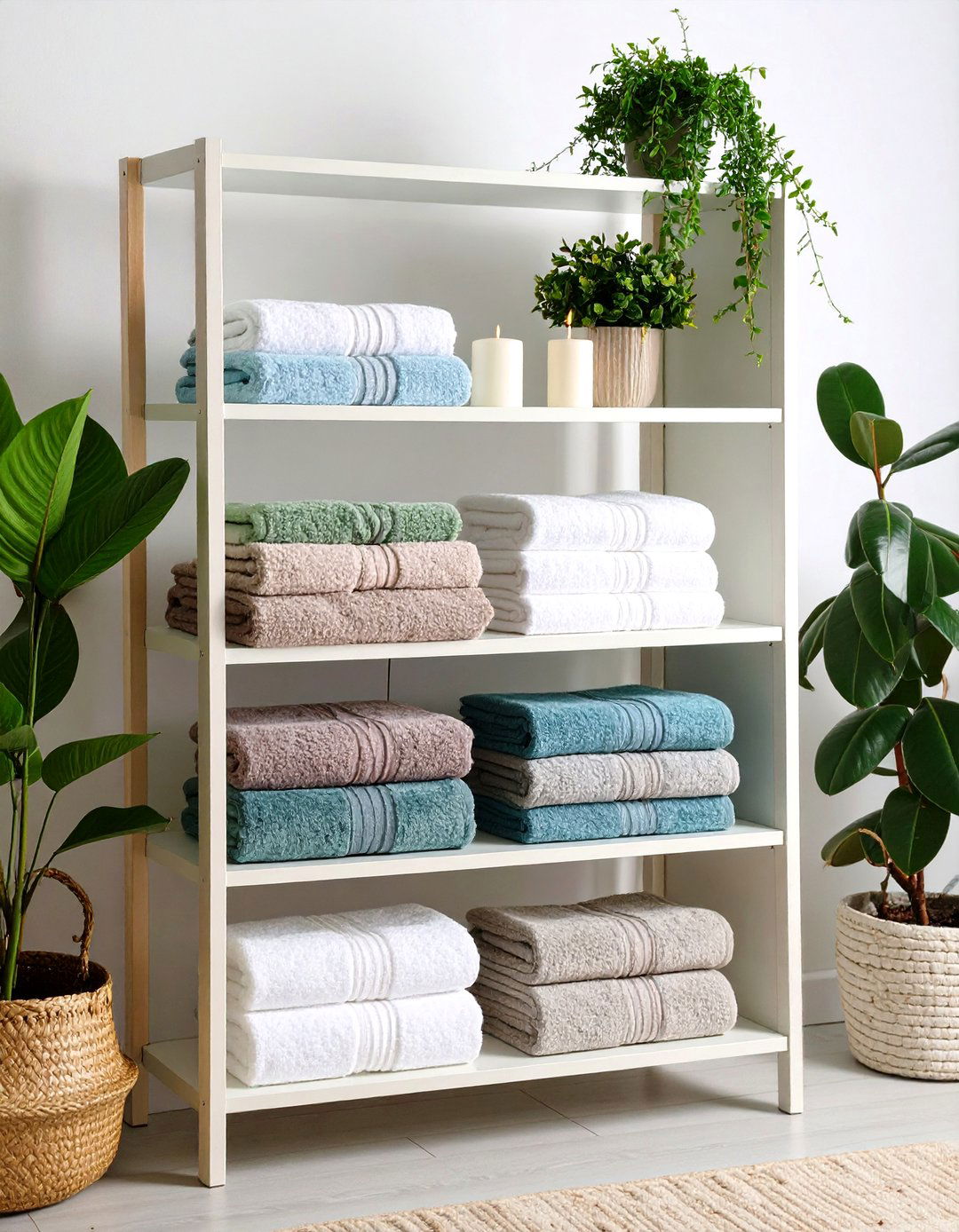
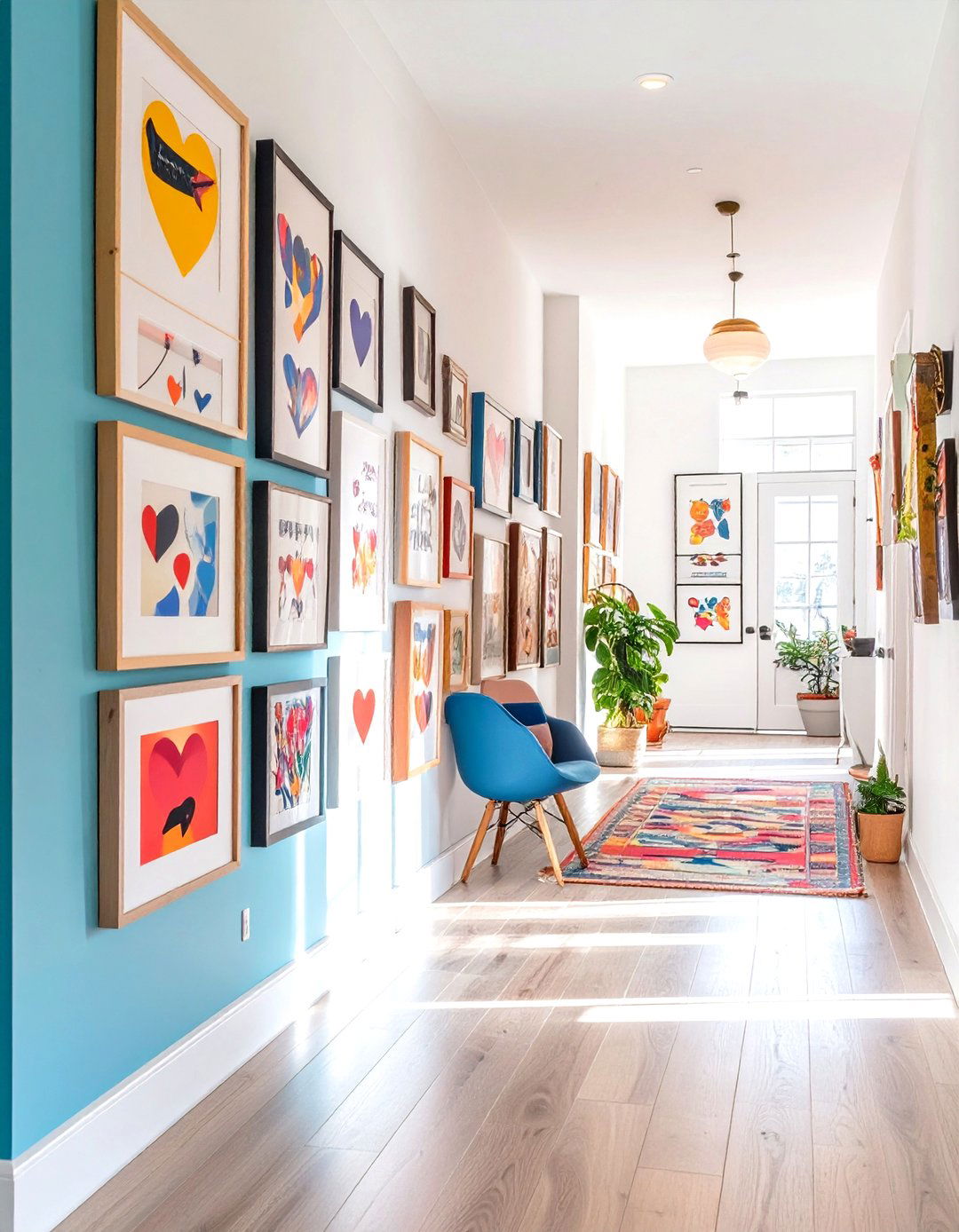

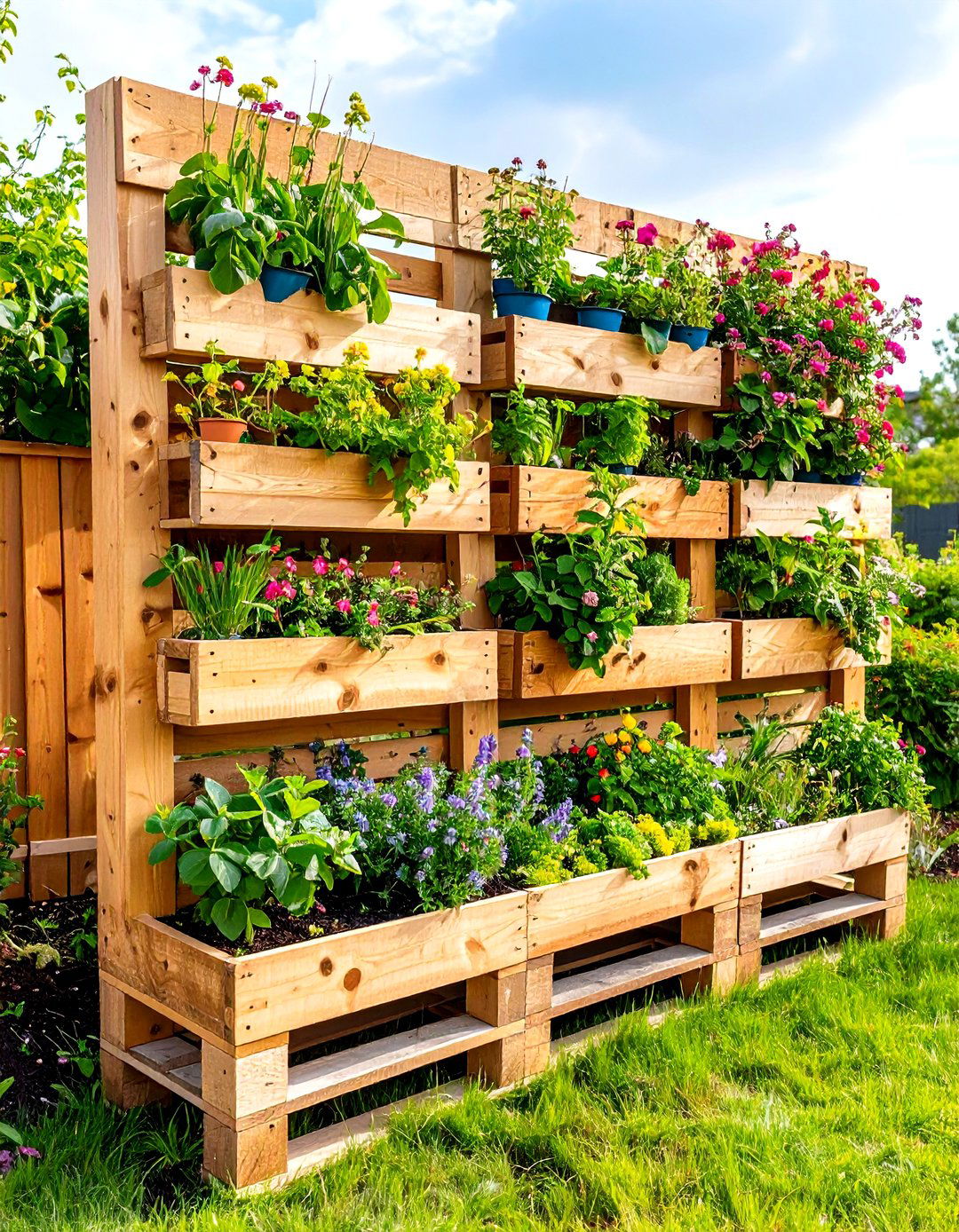
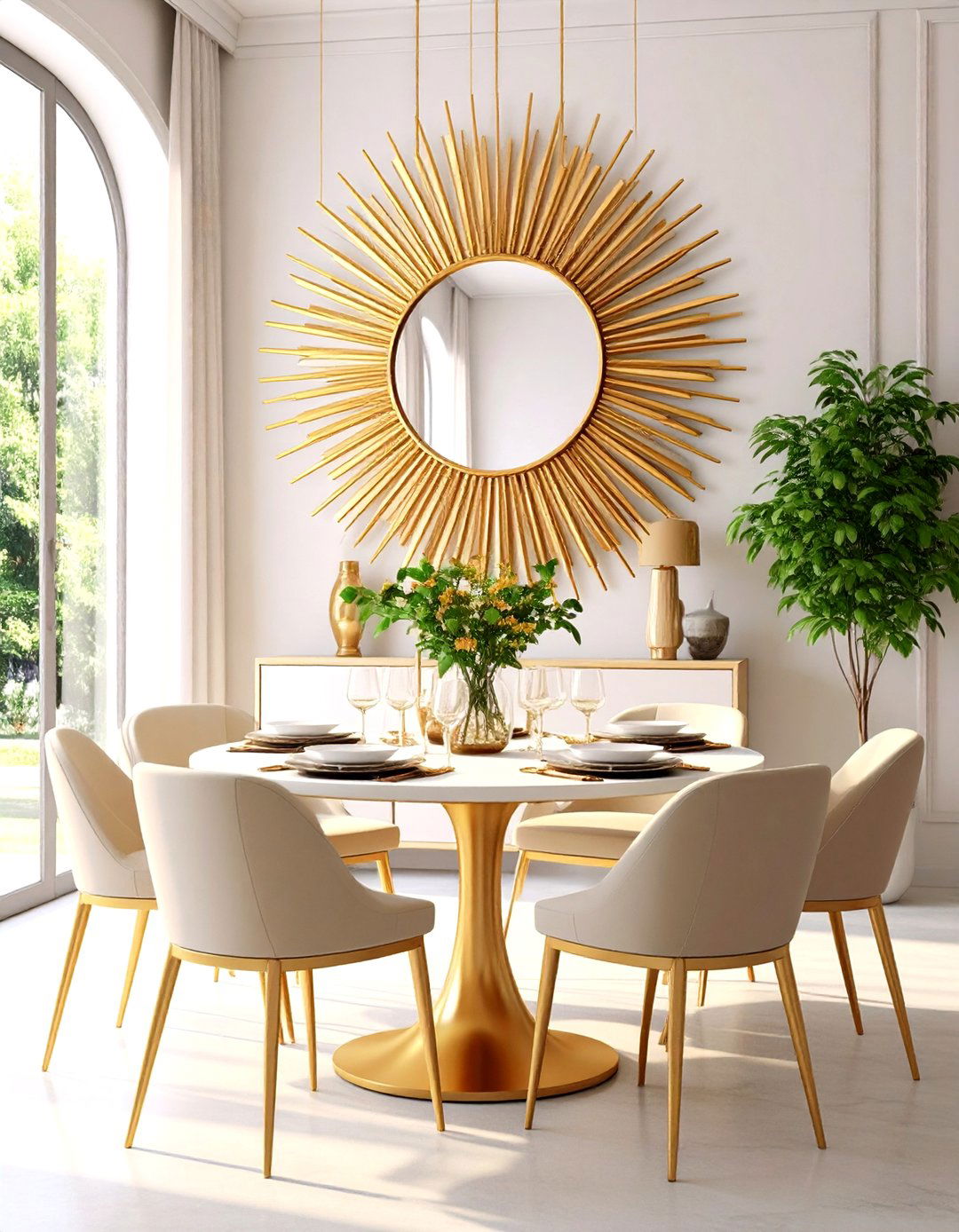
Leave a Reply